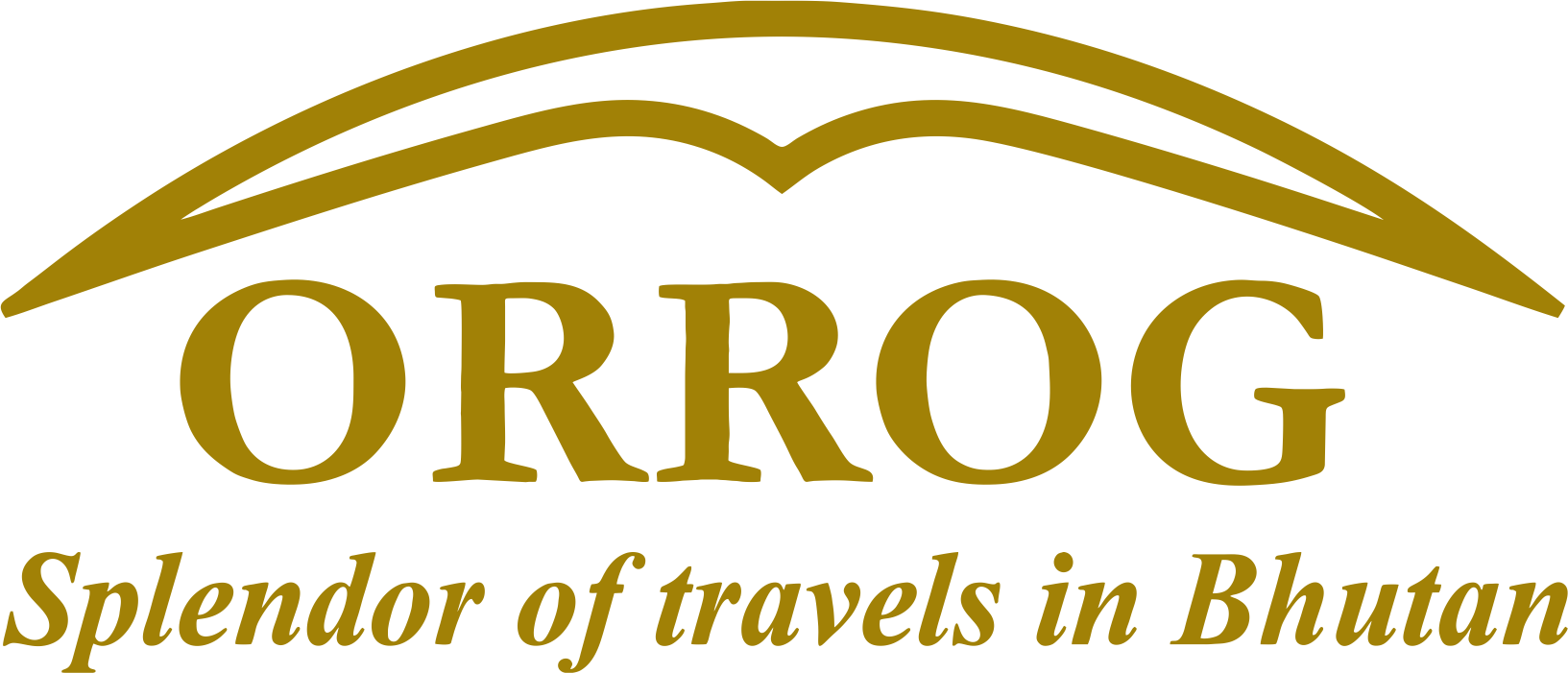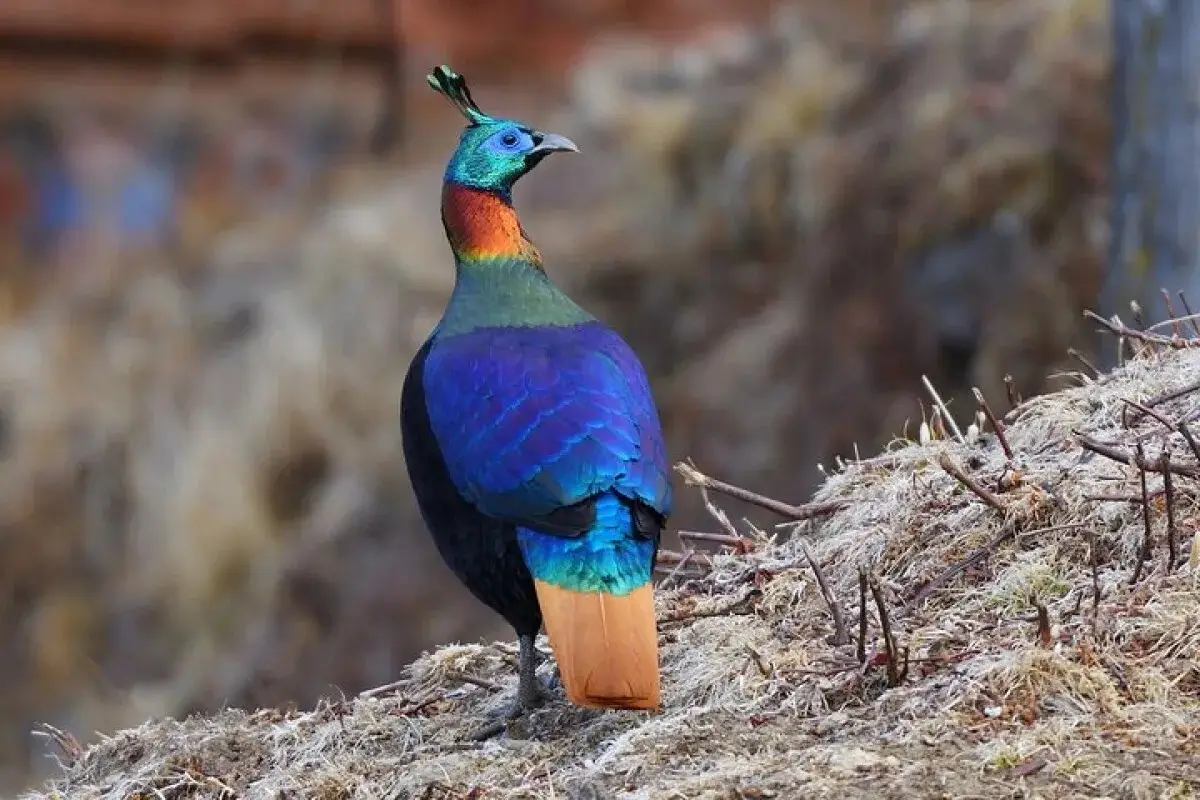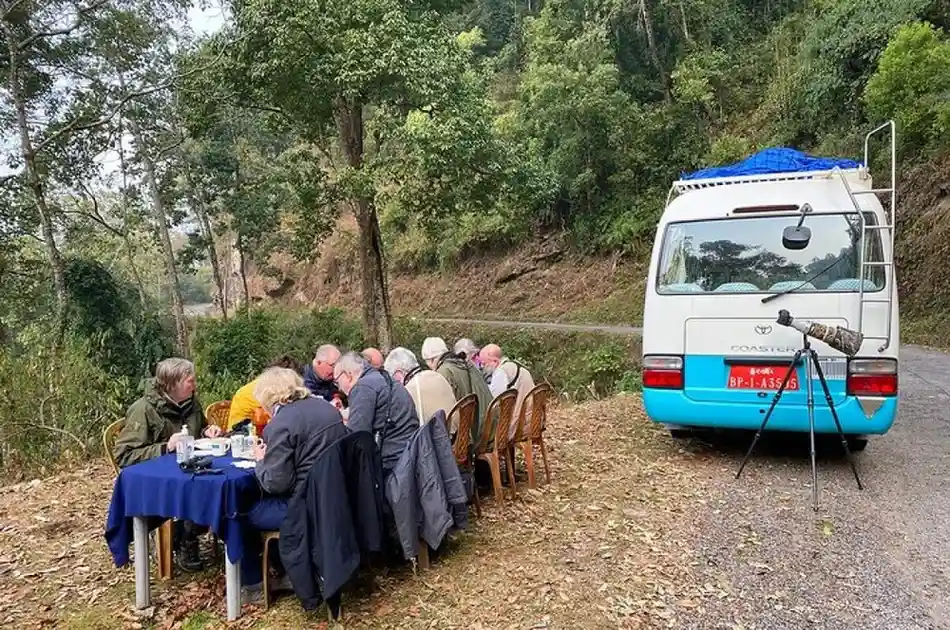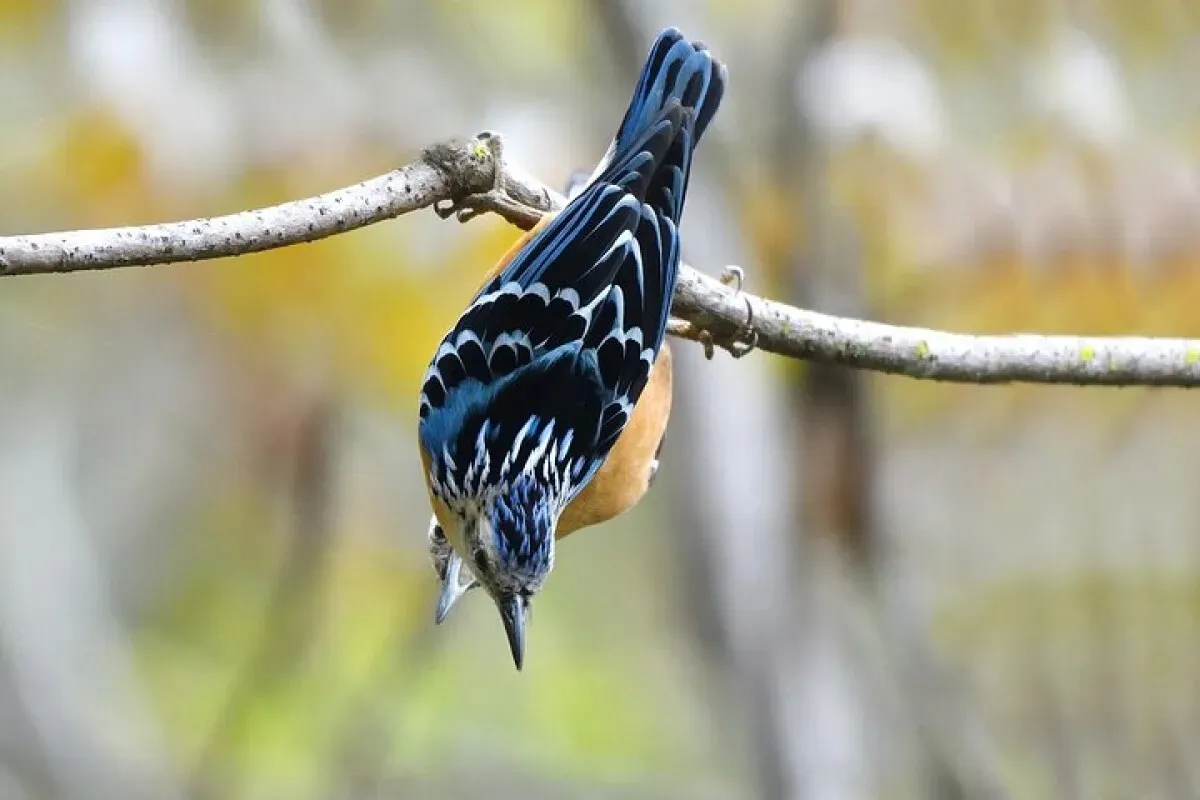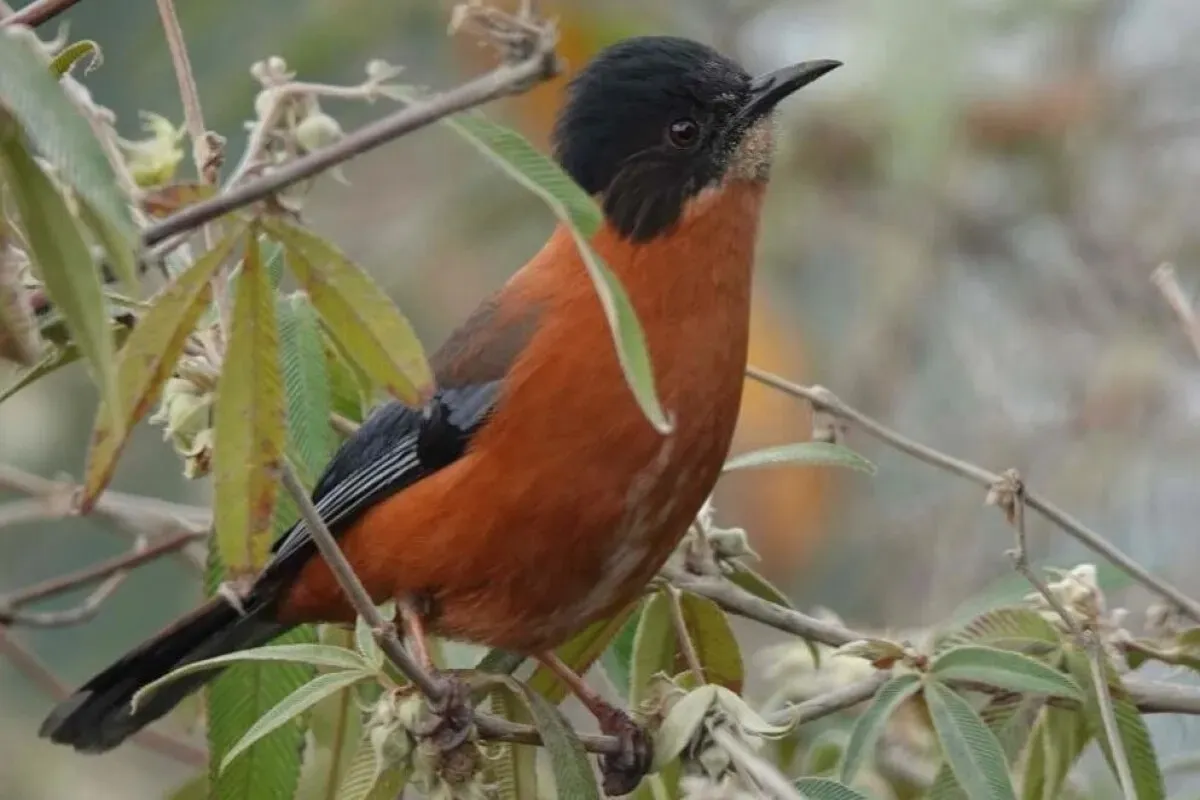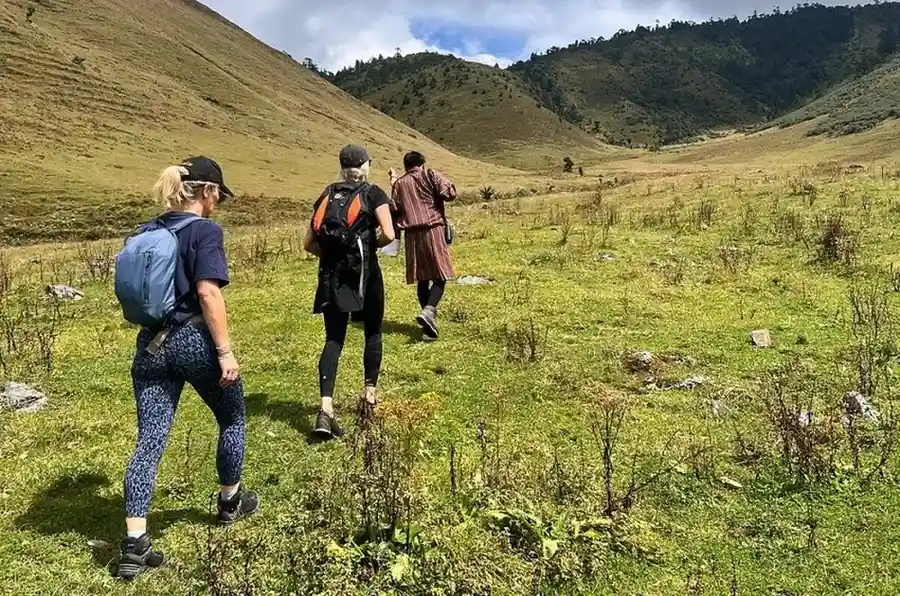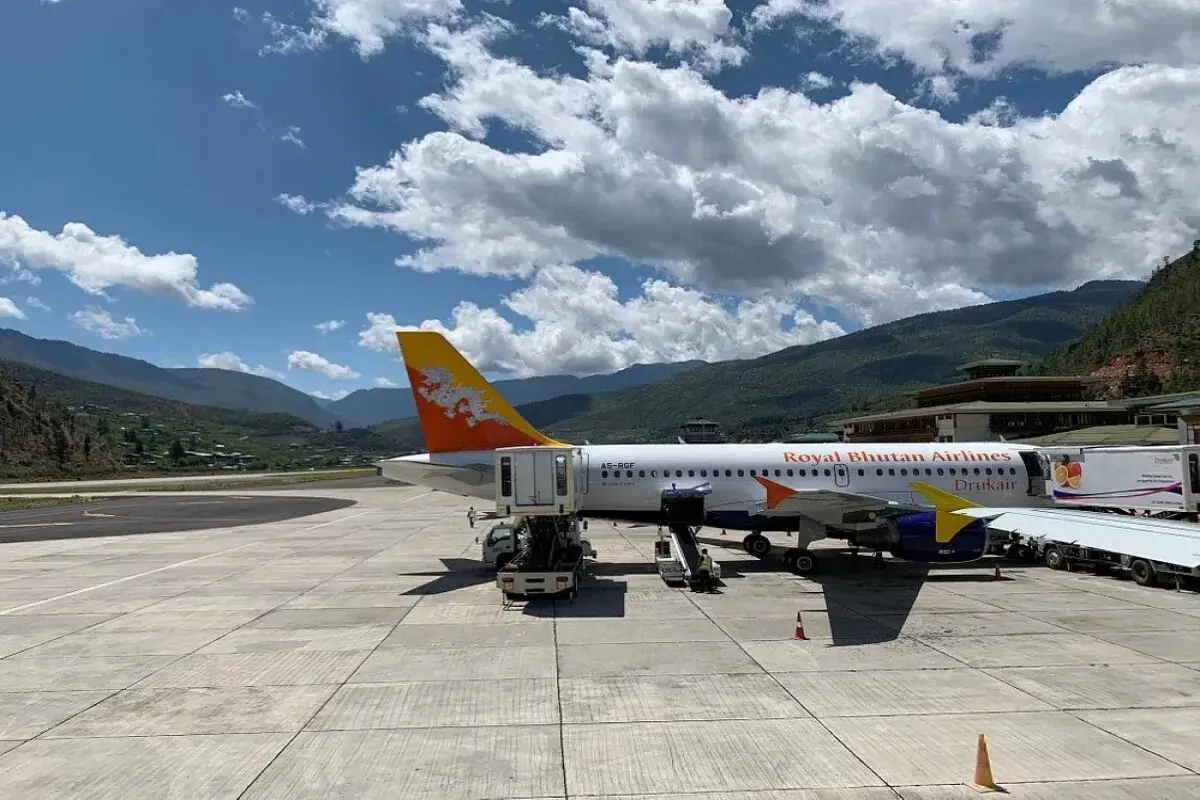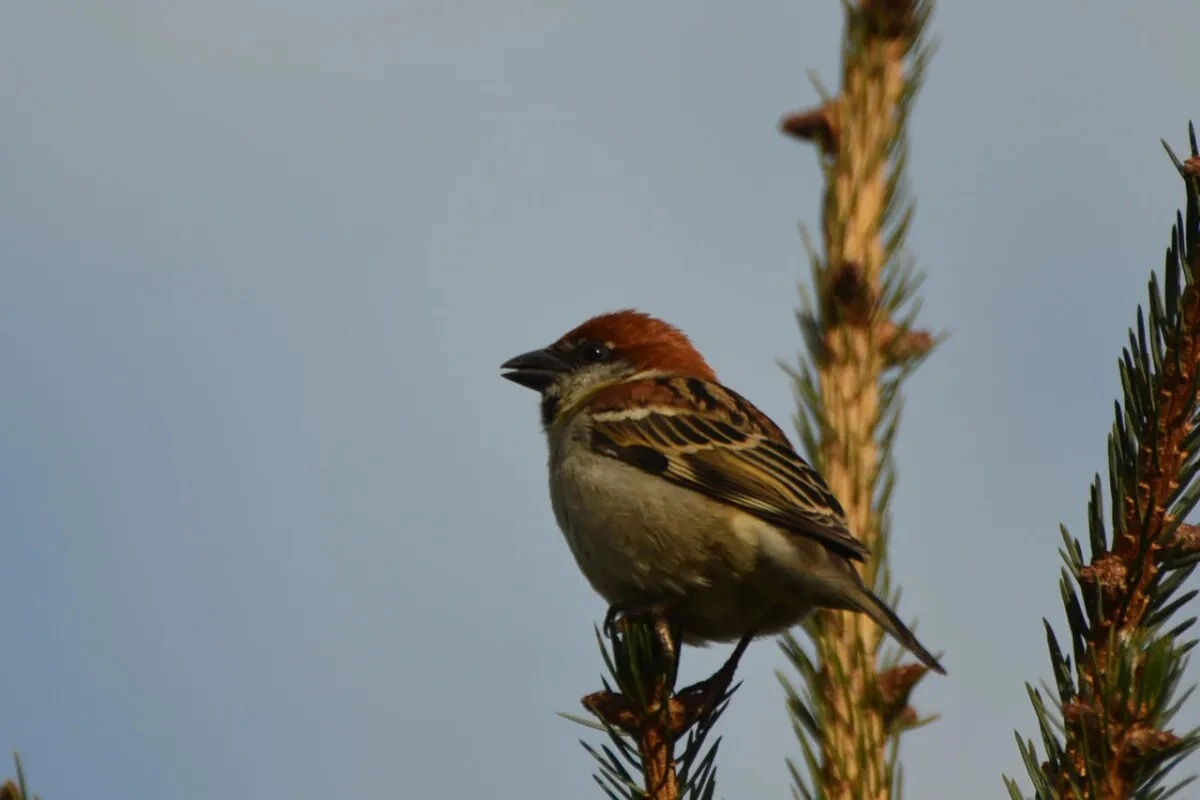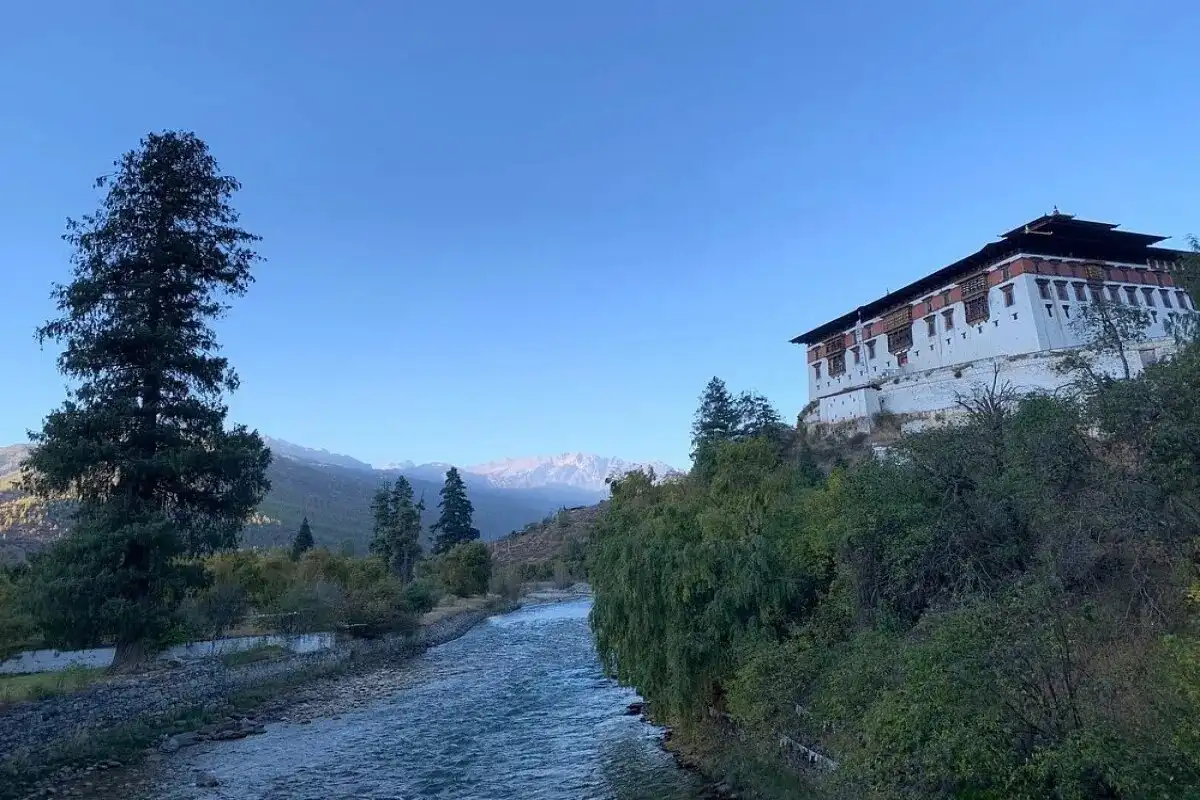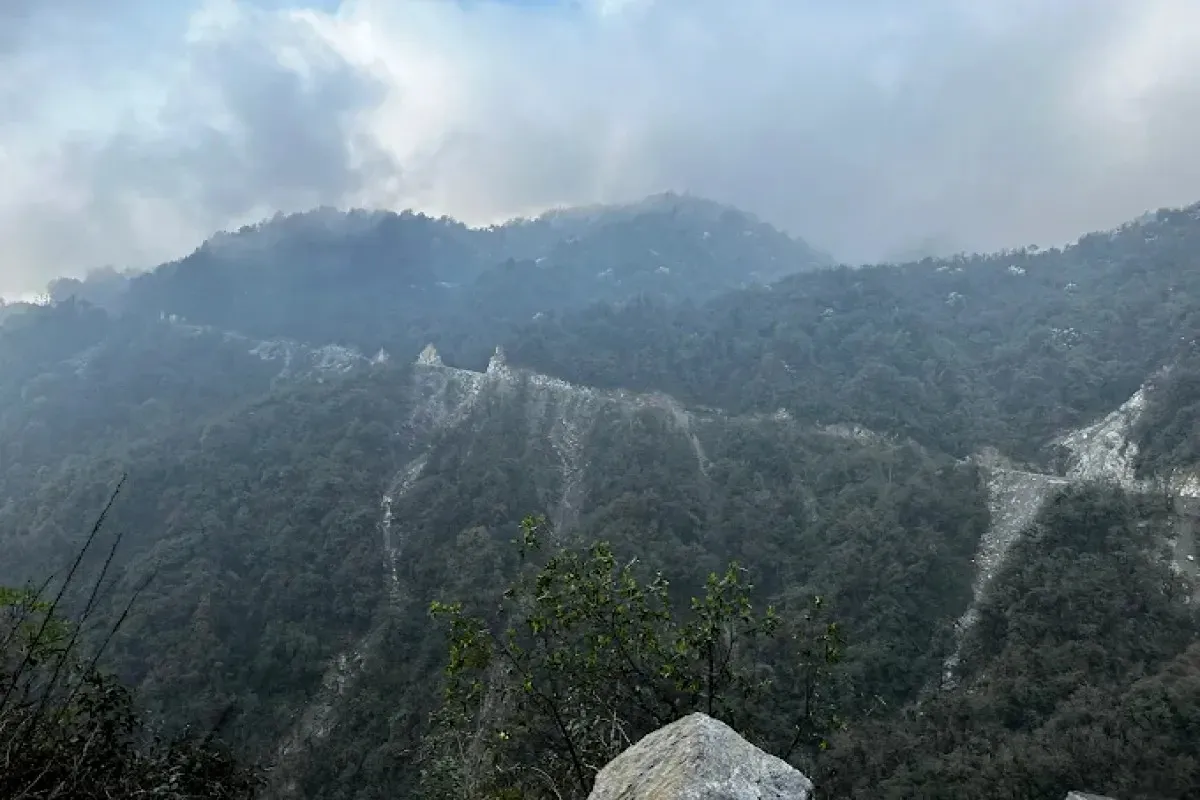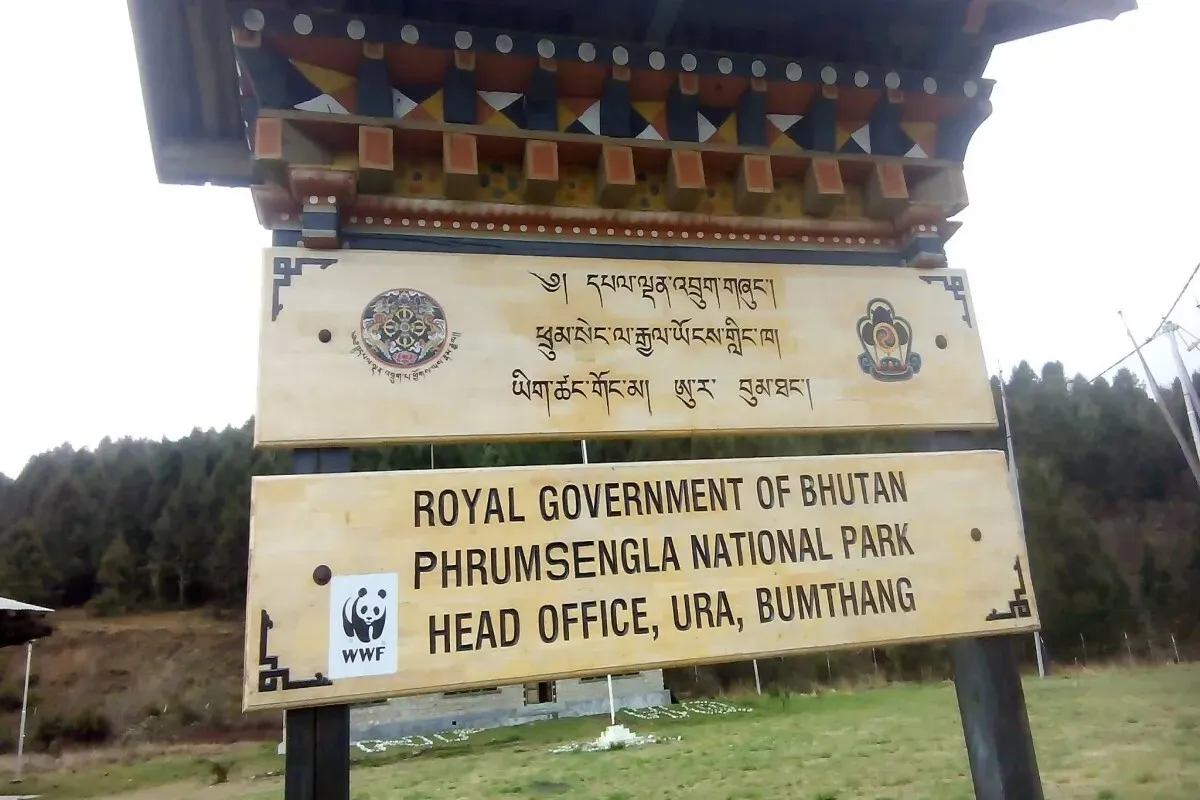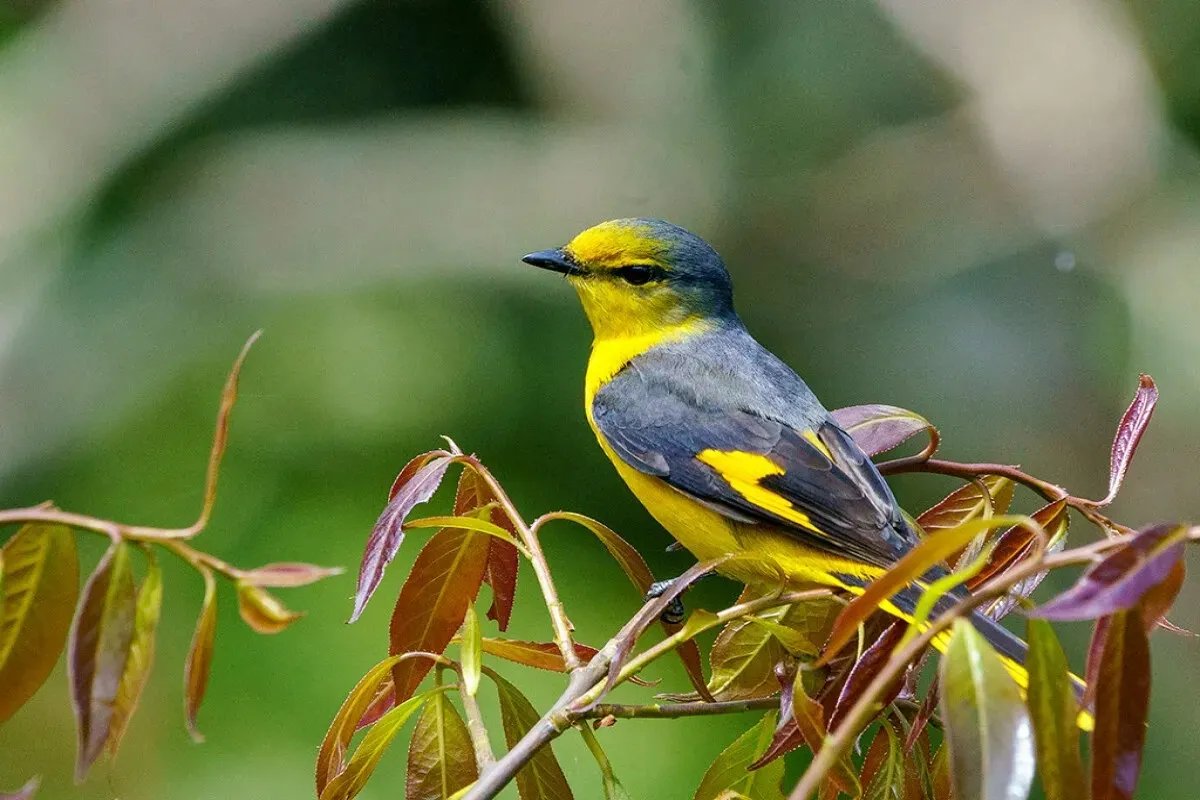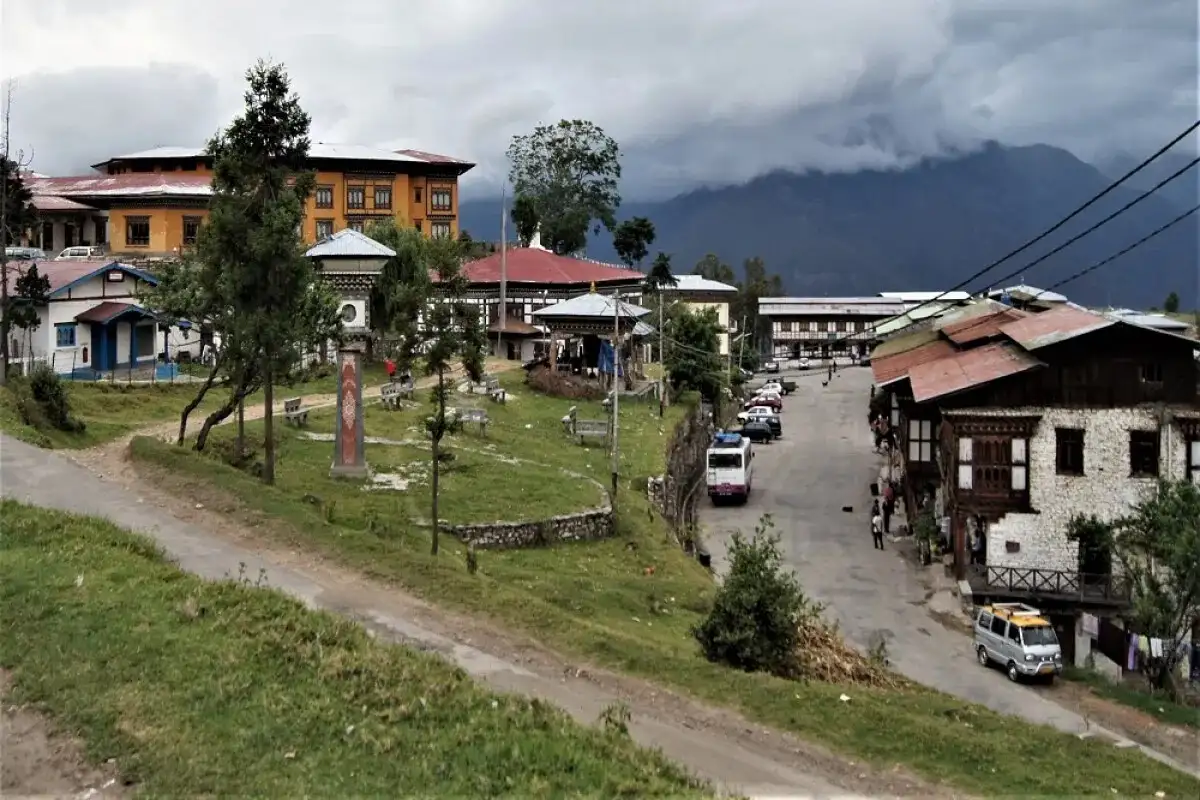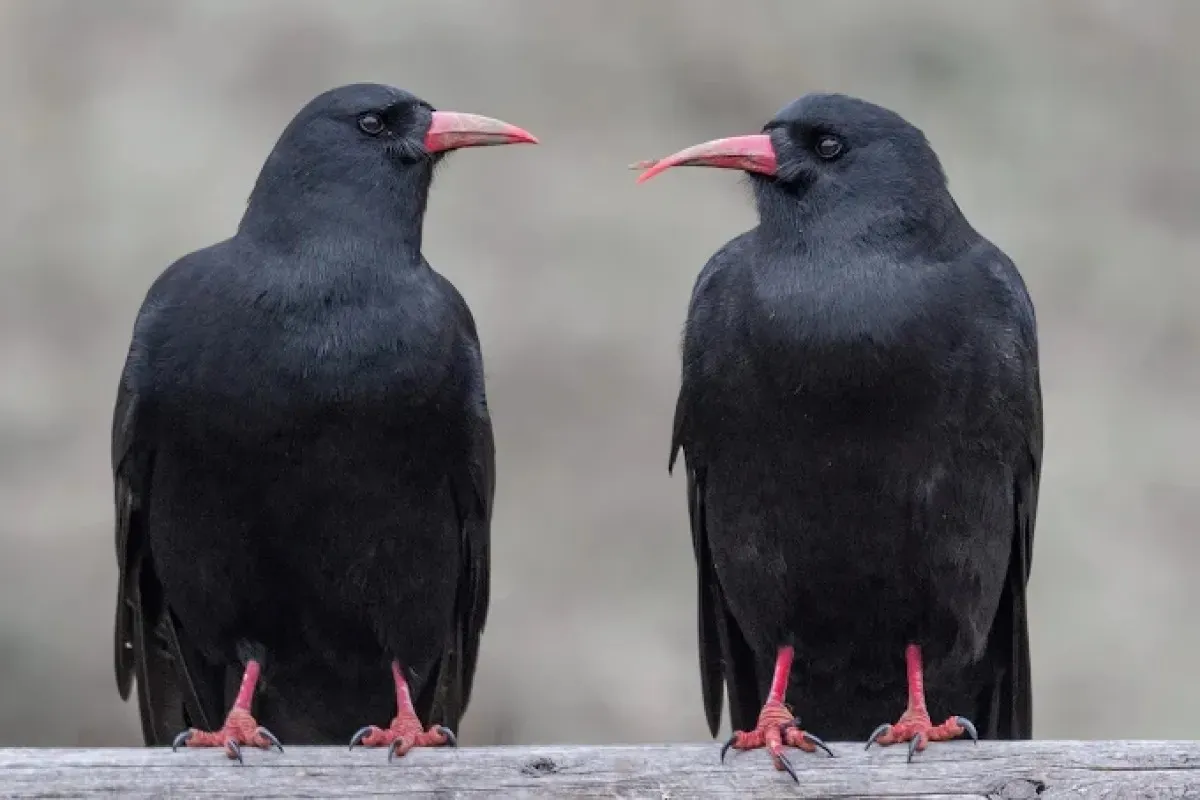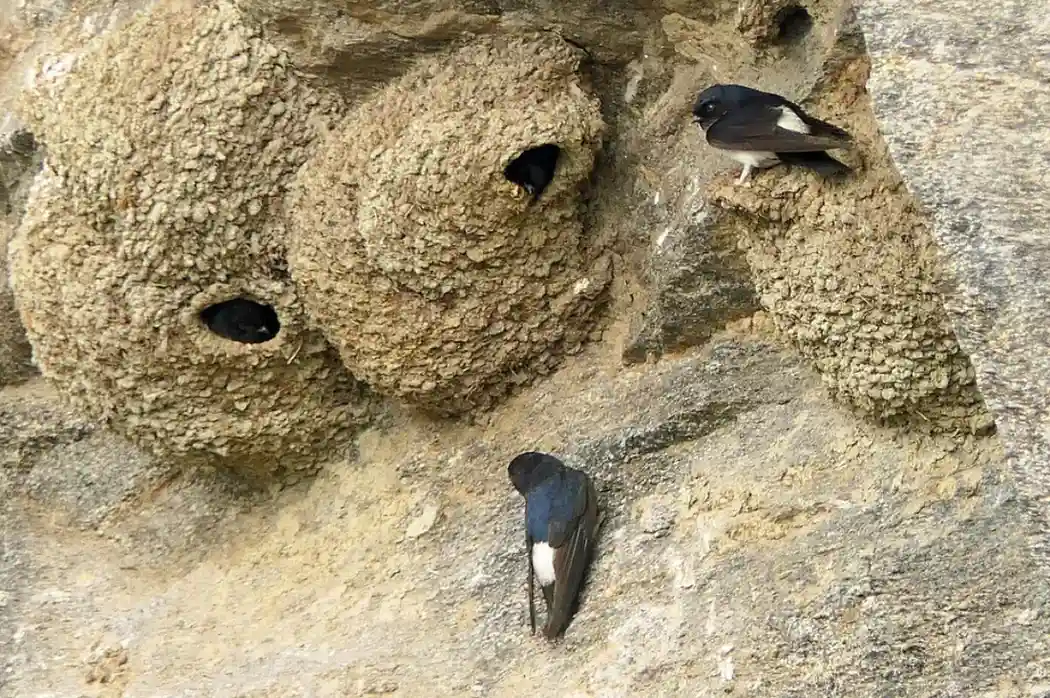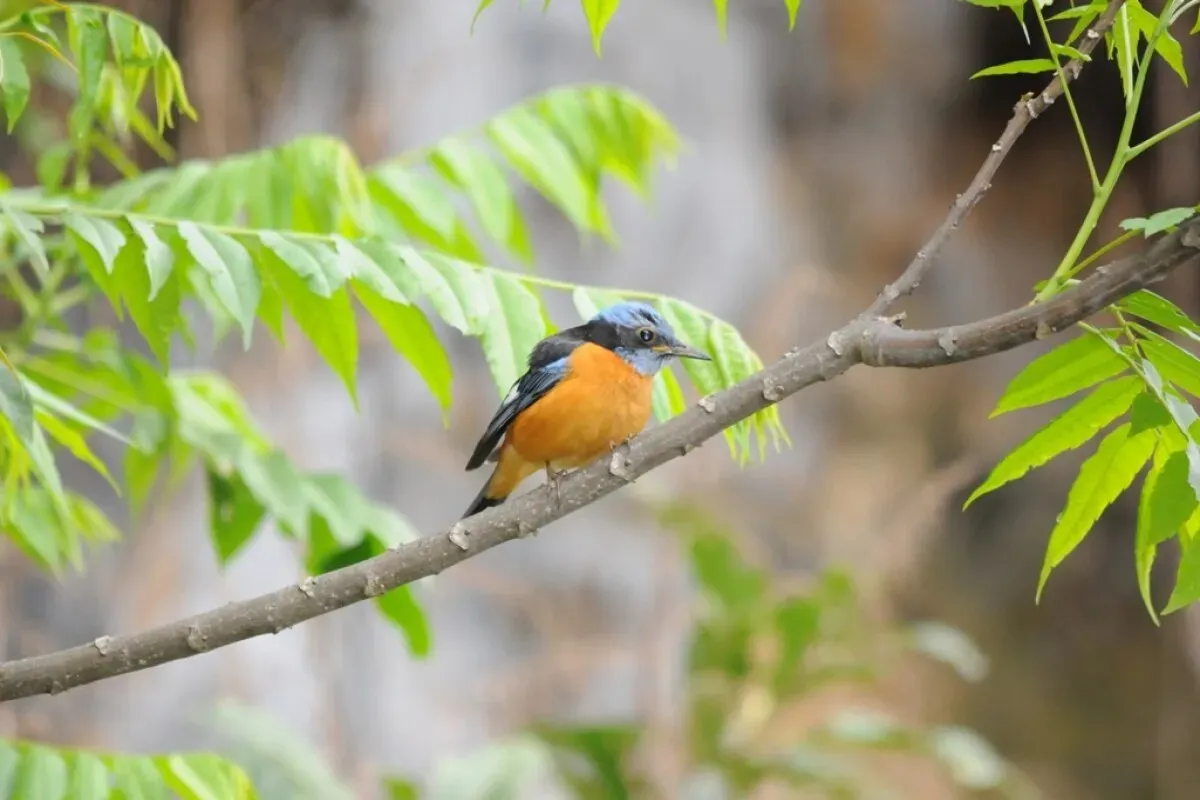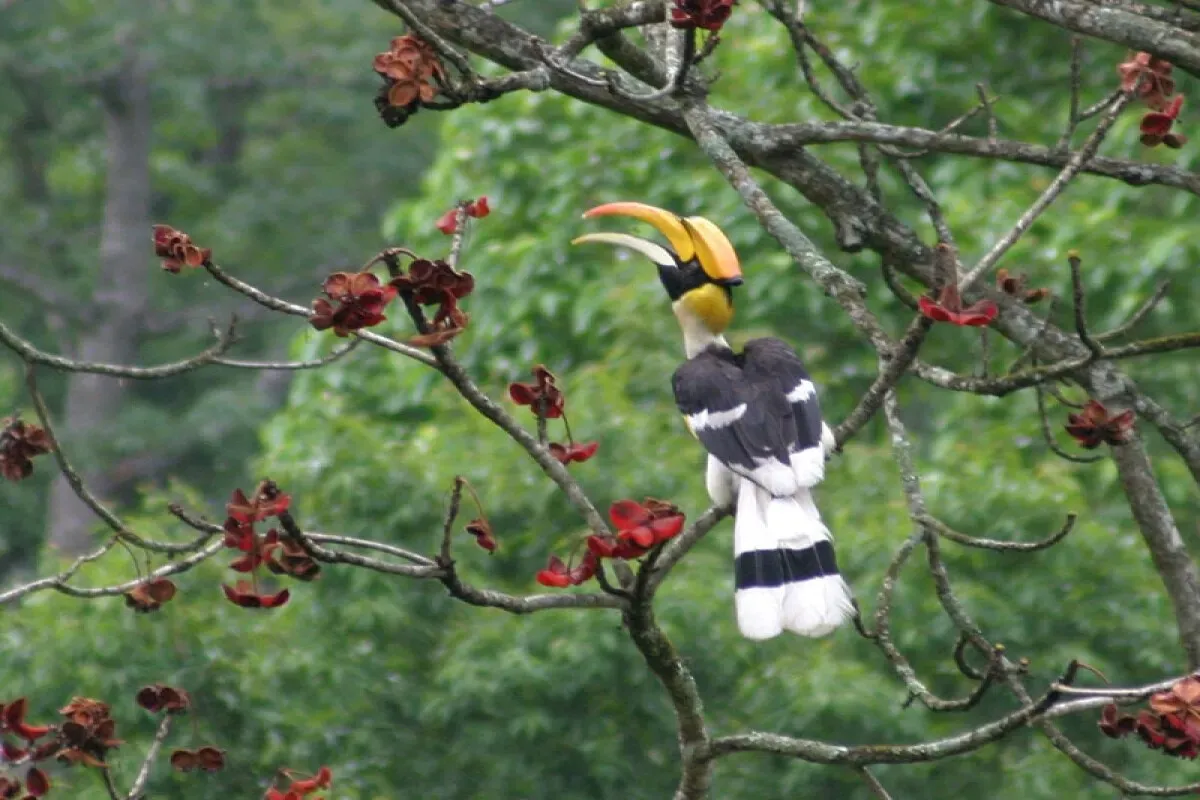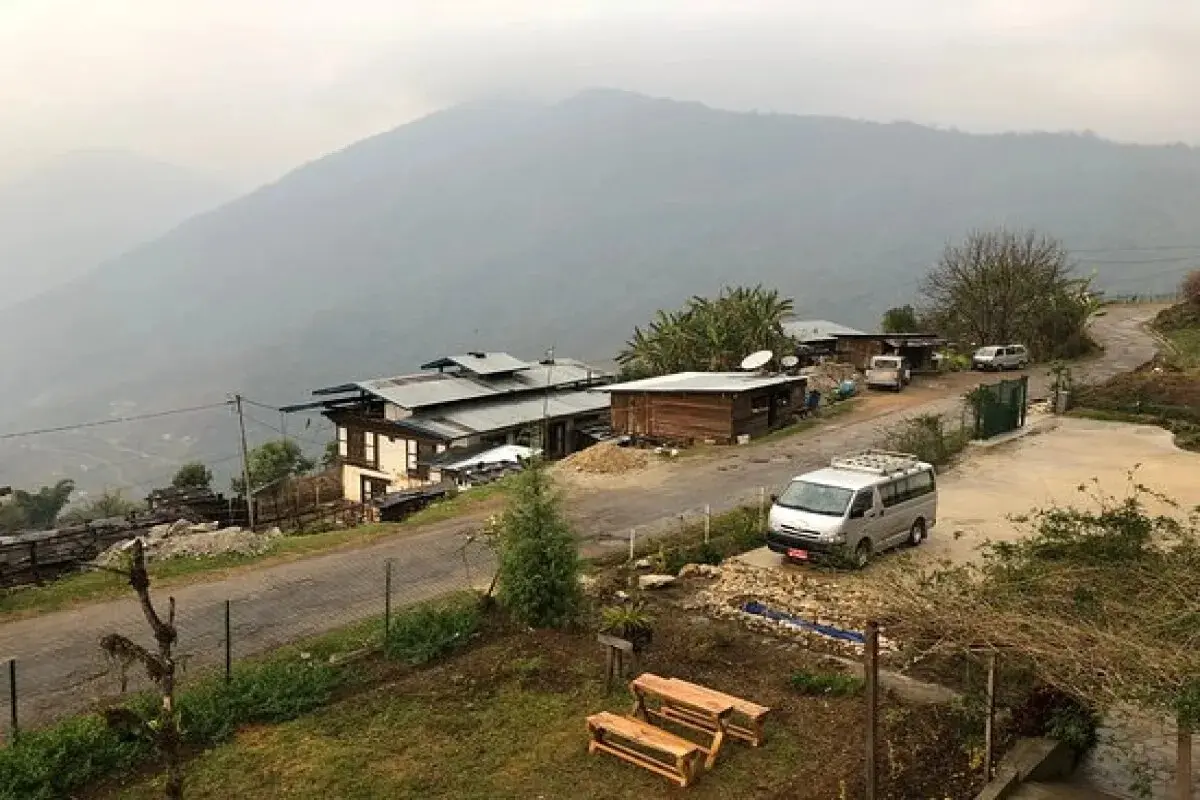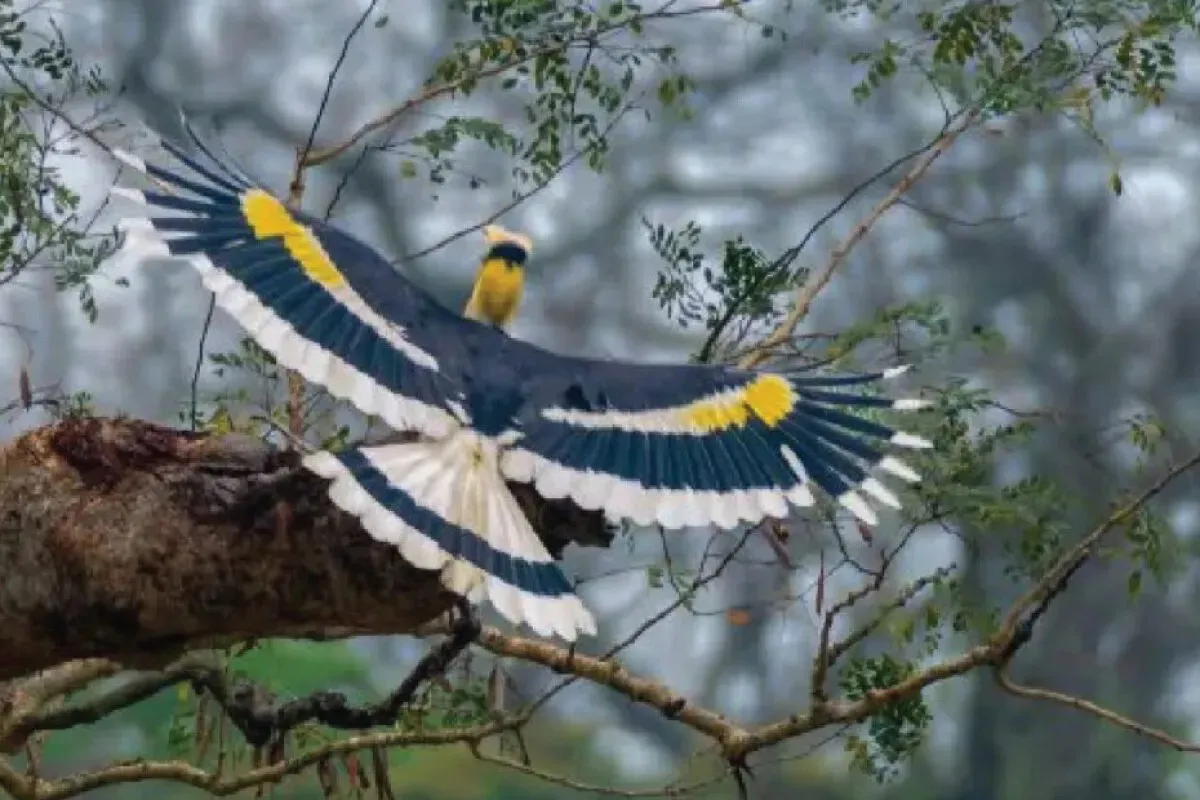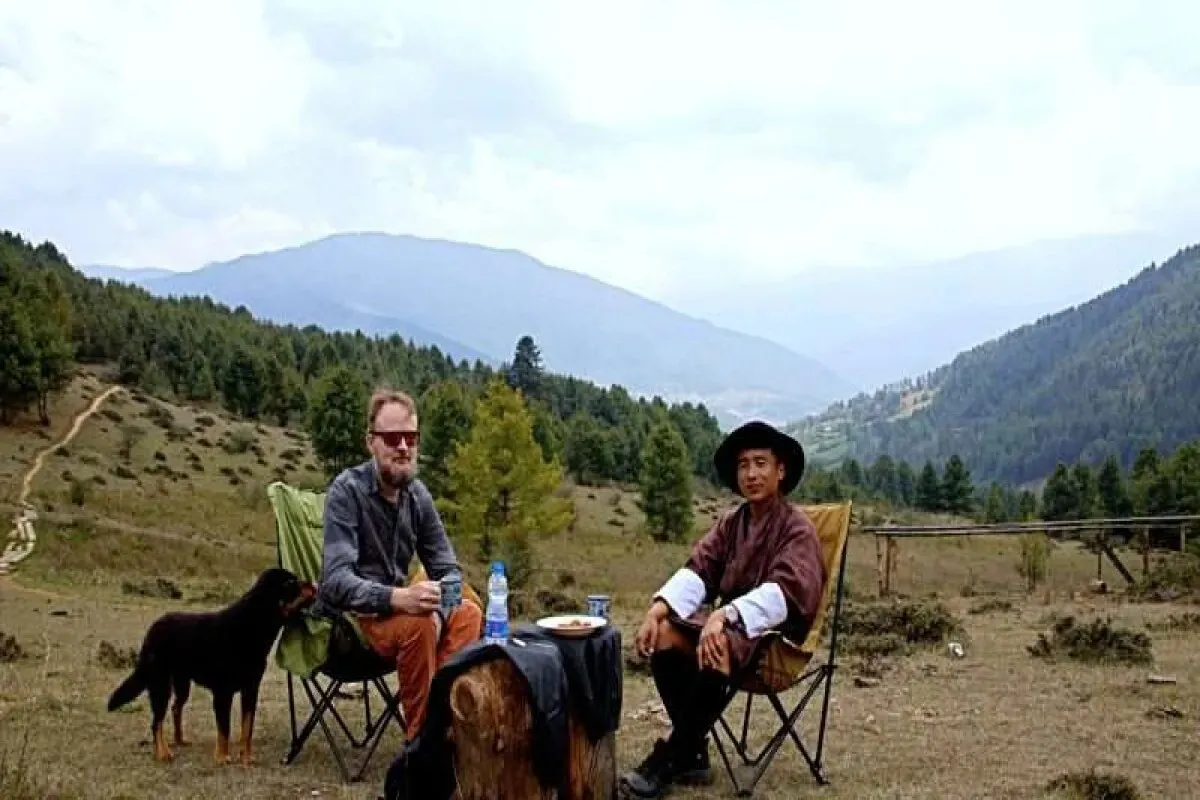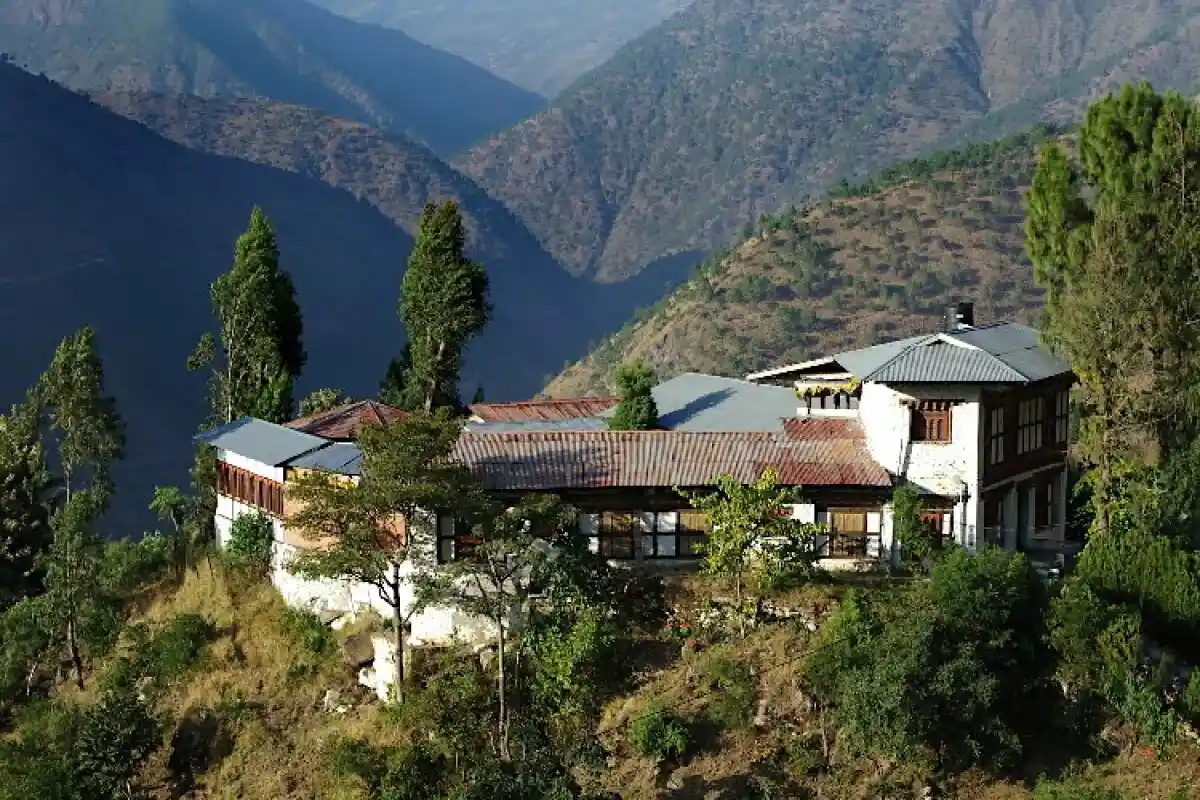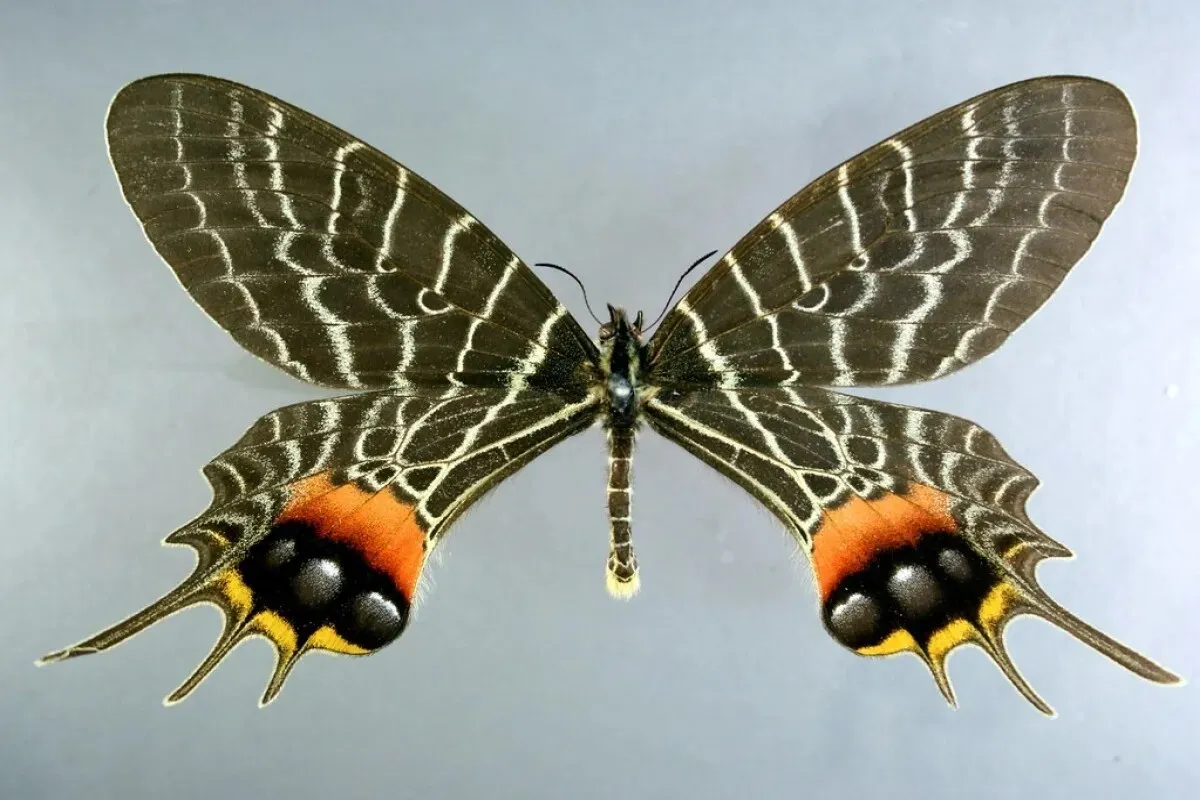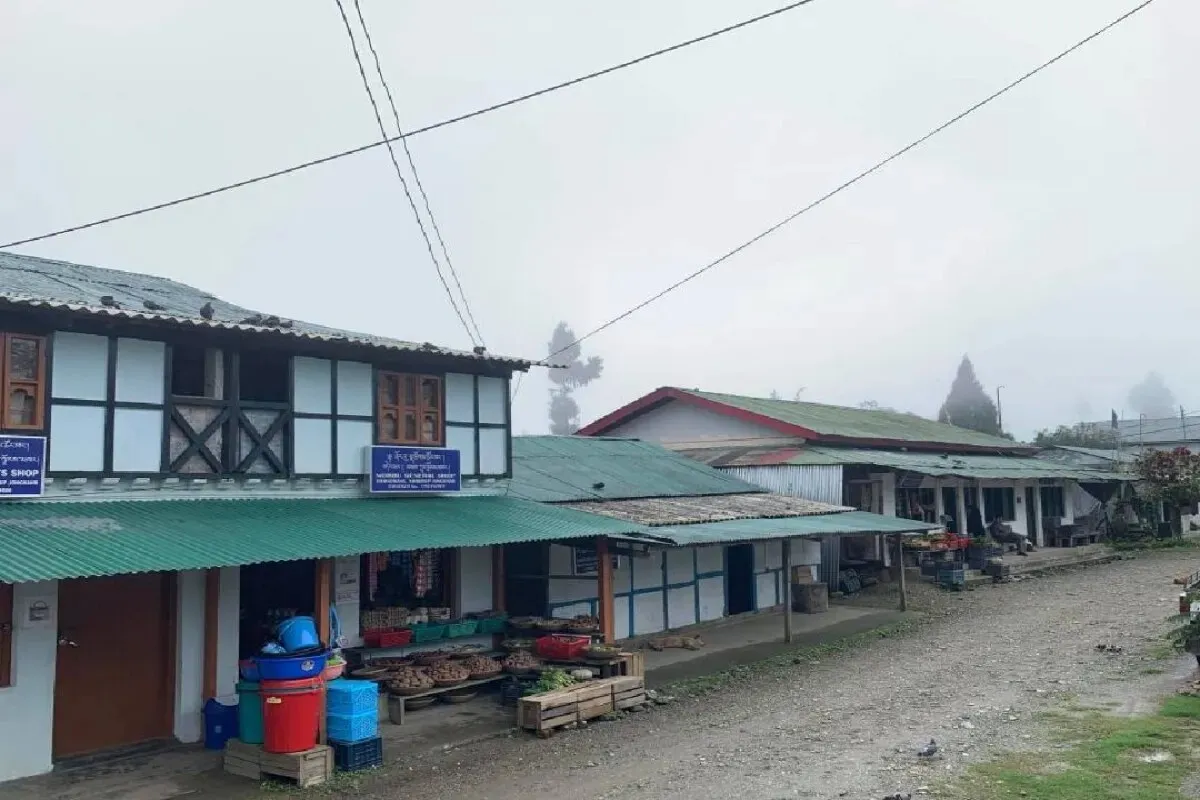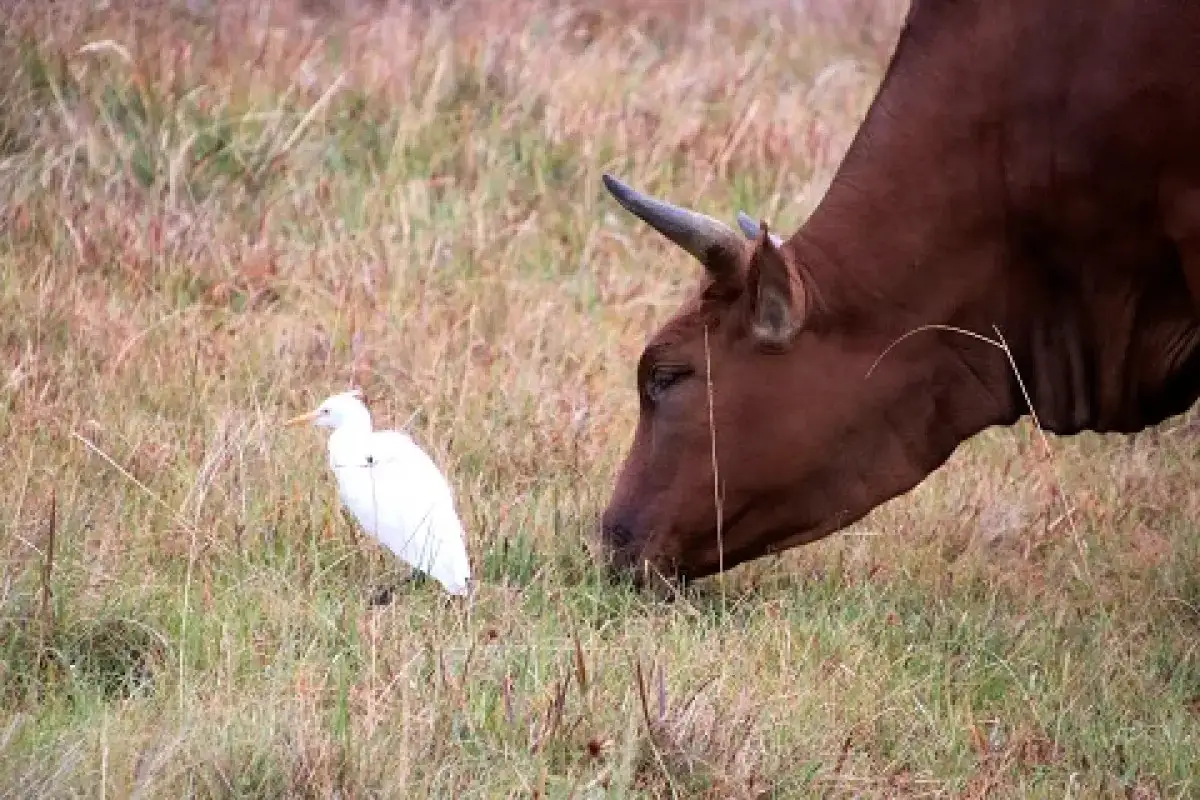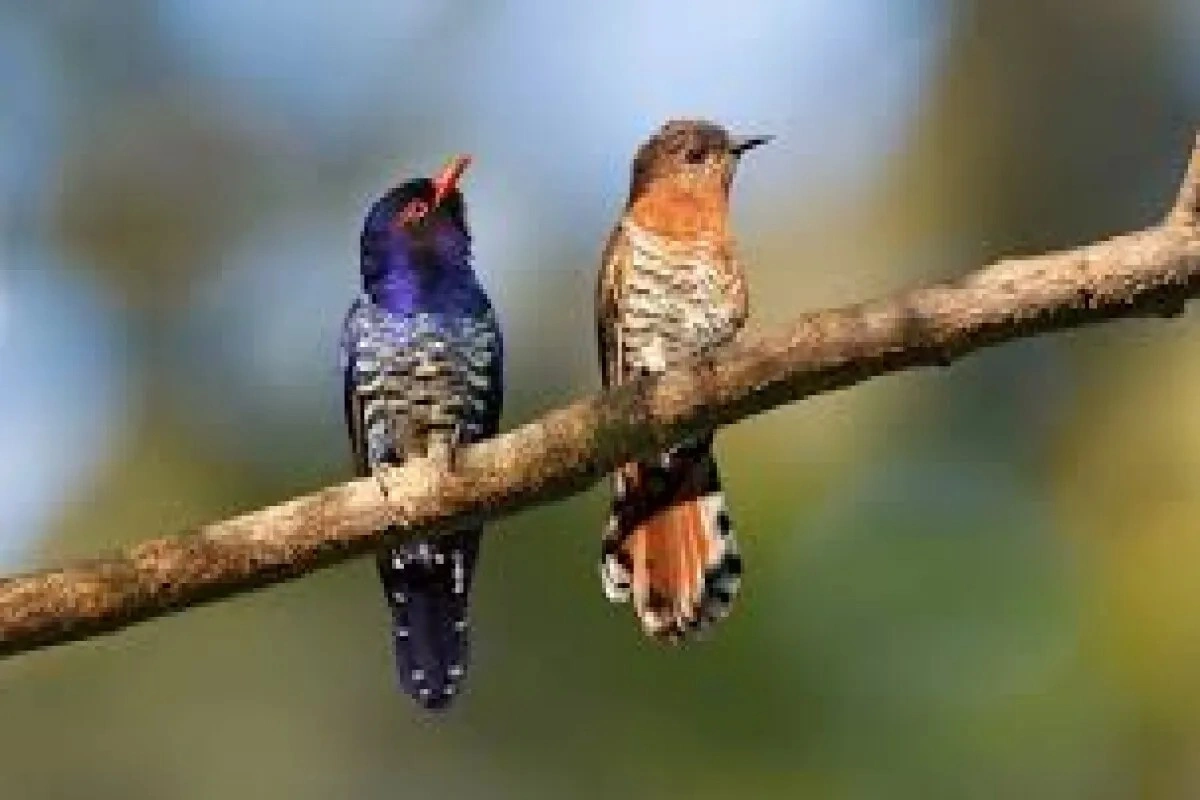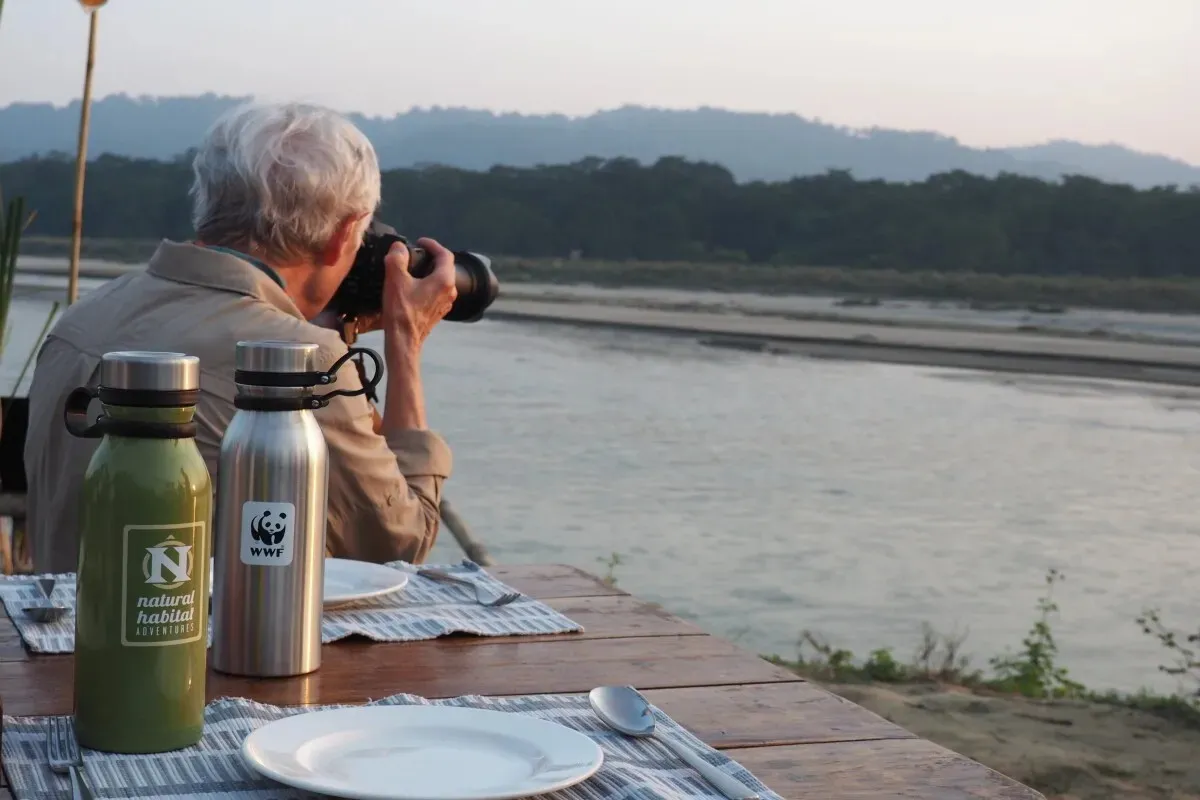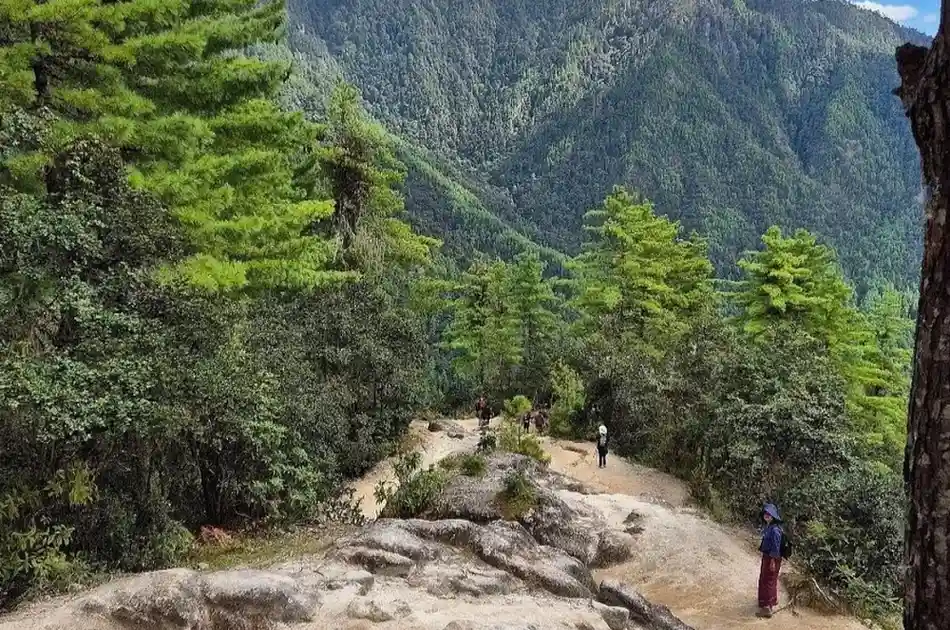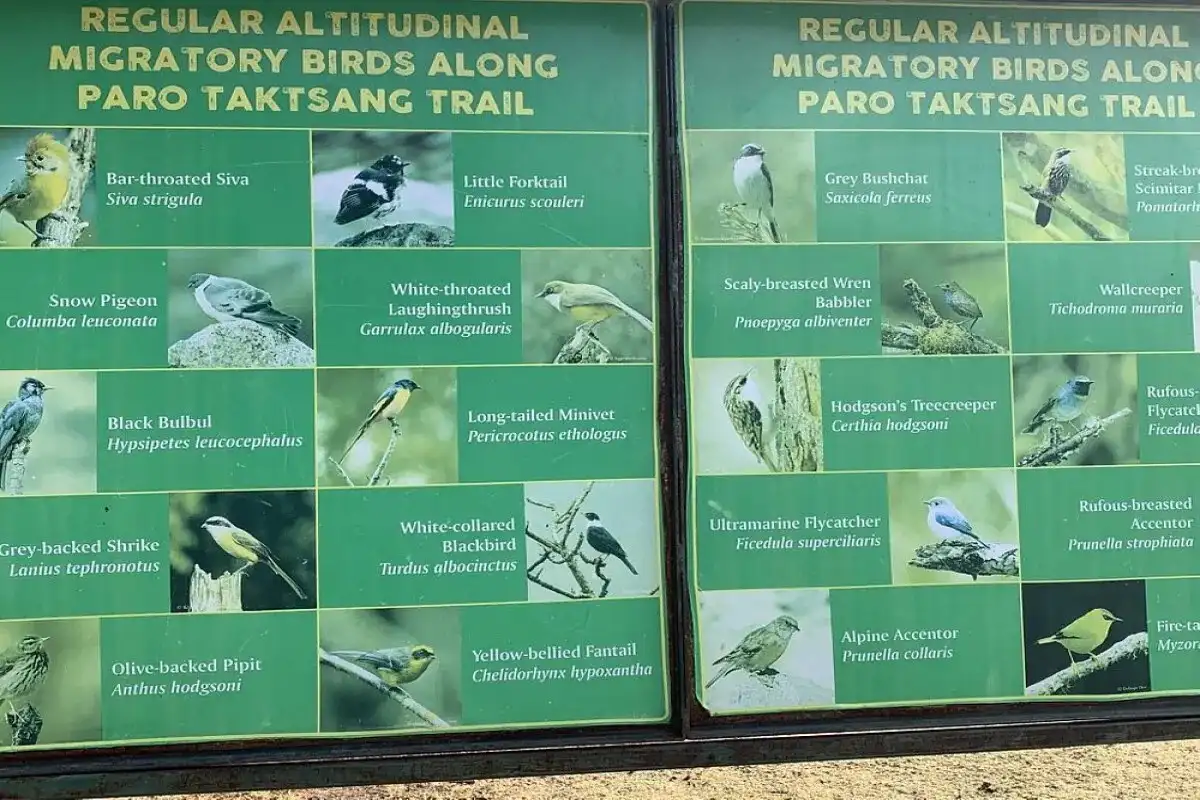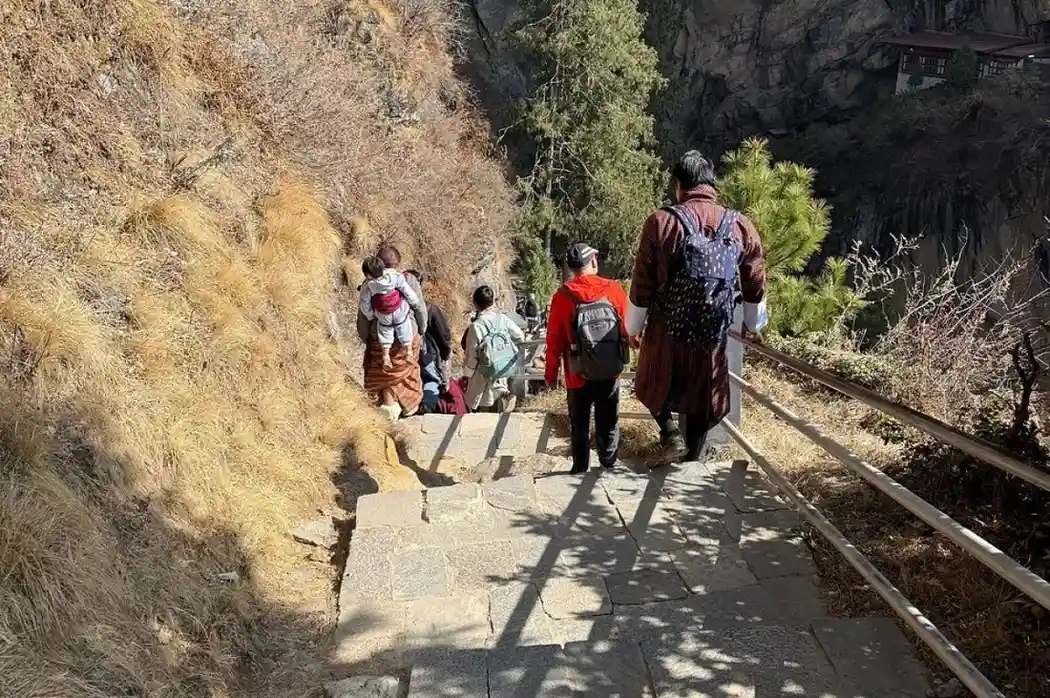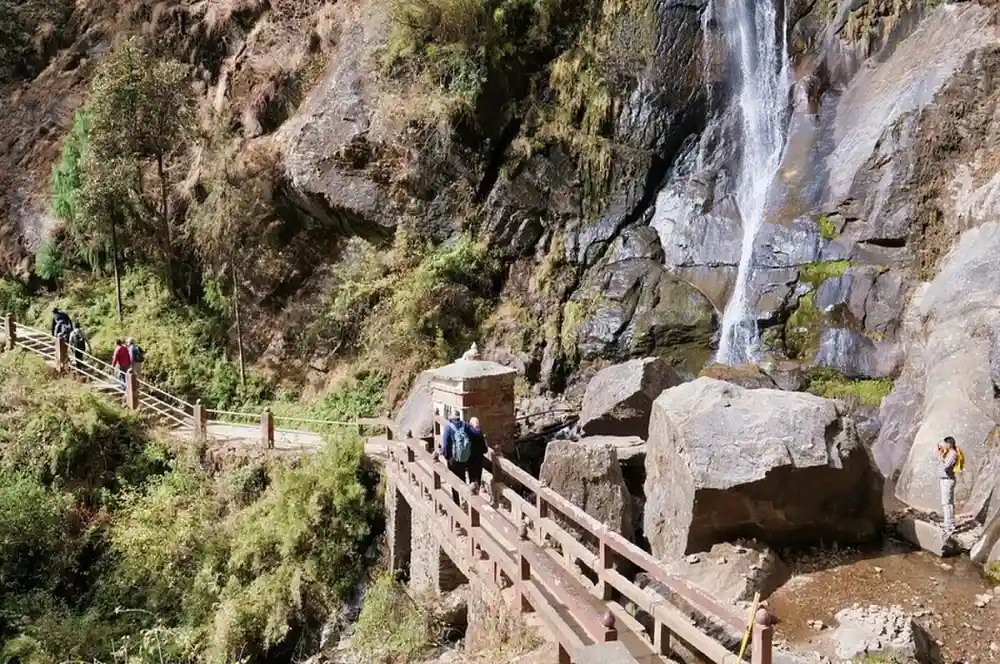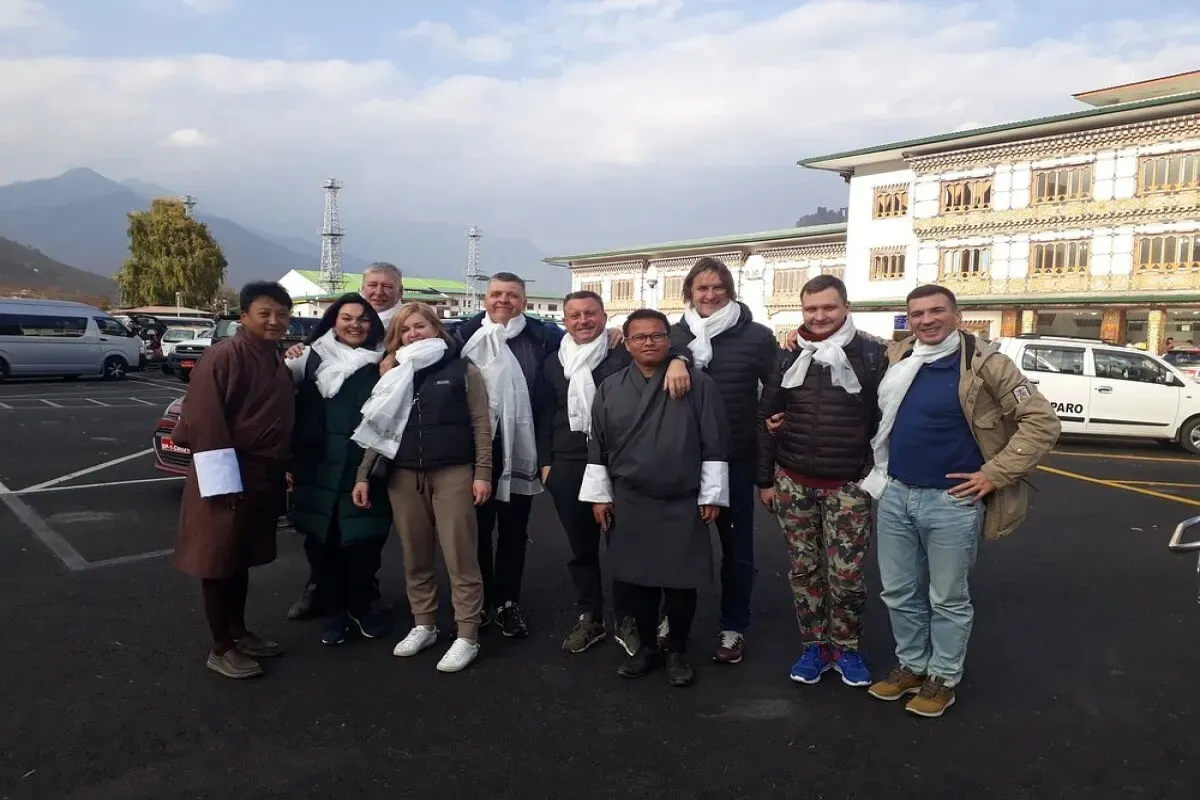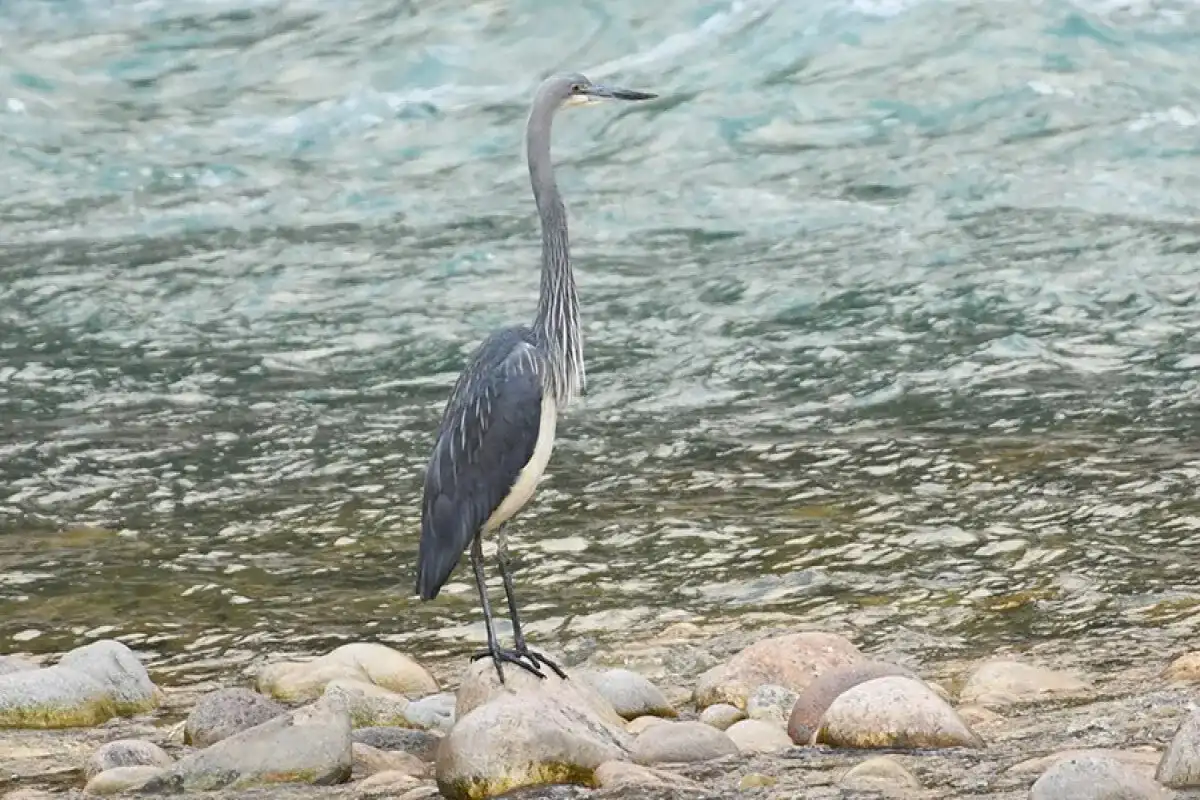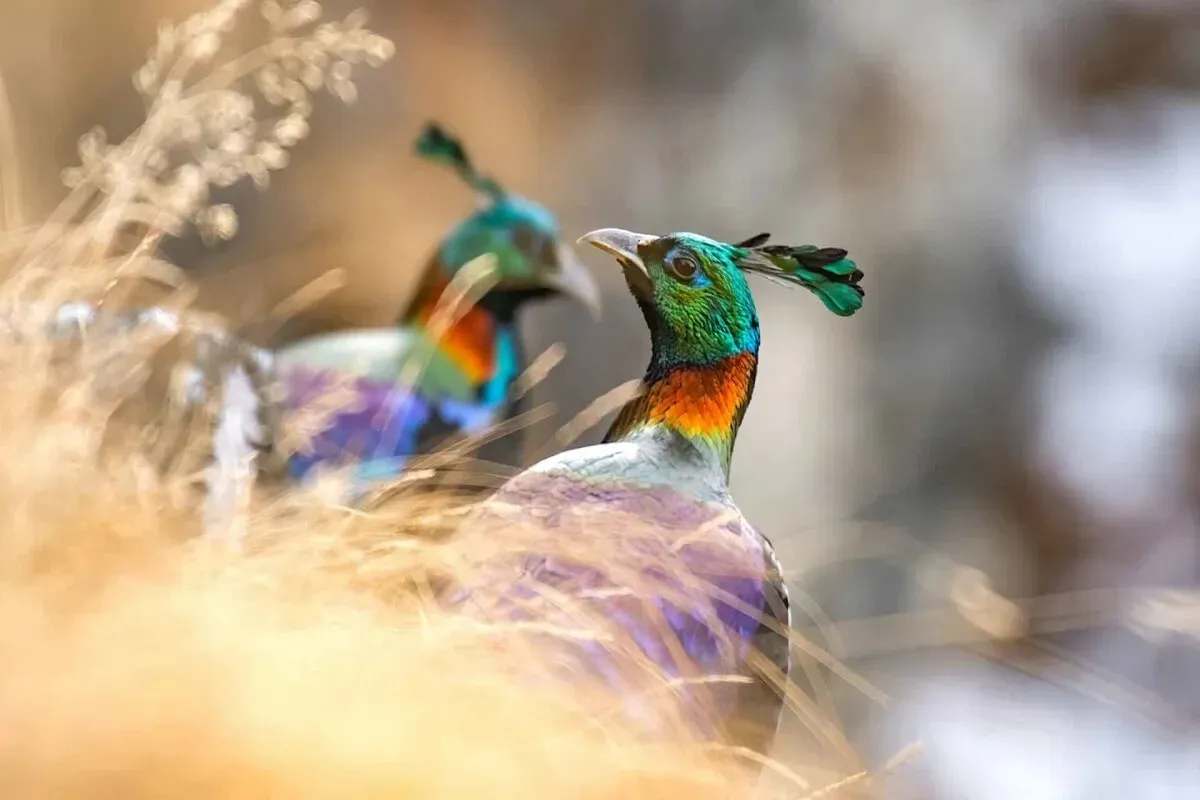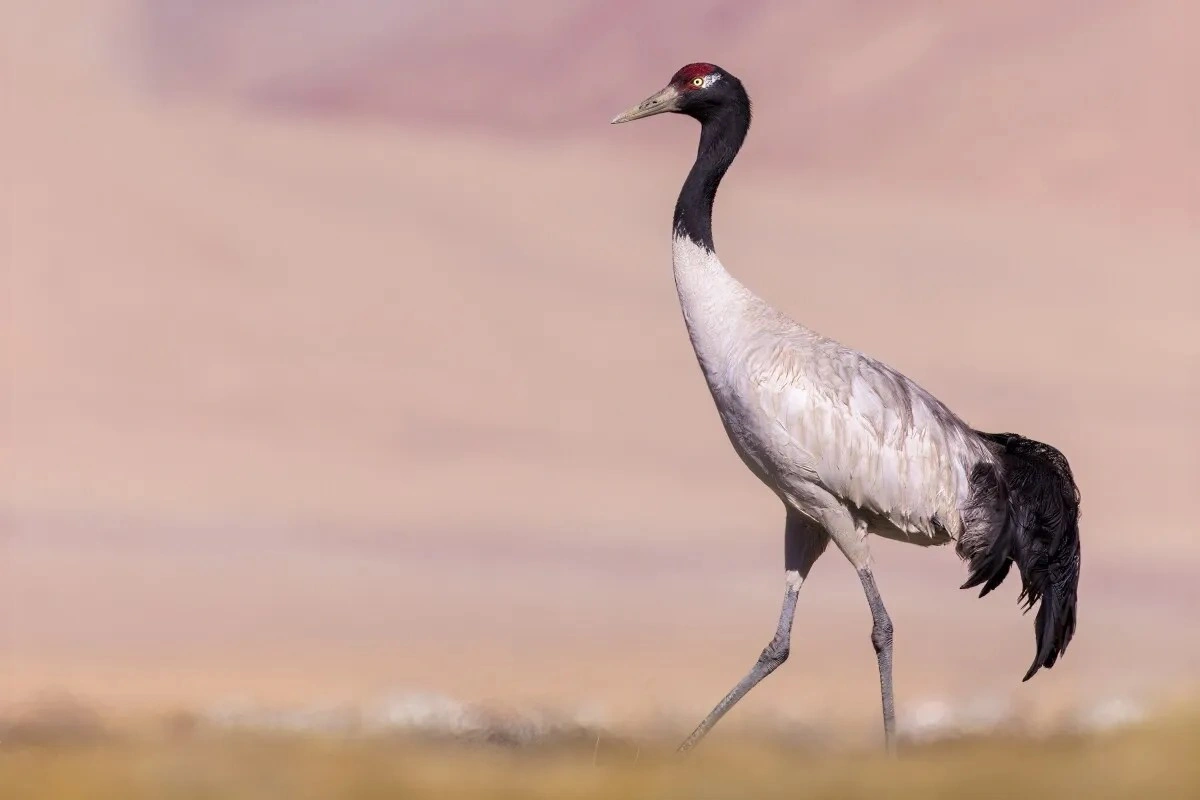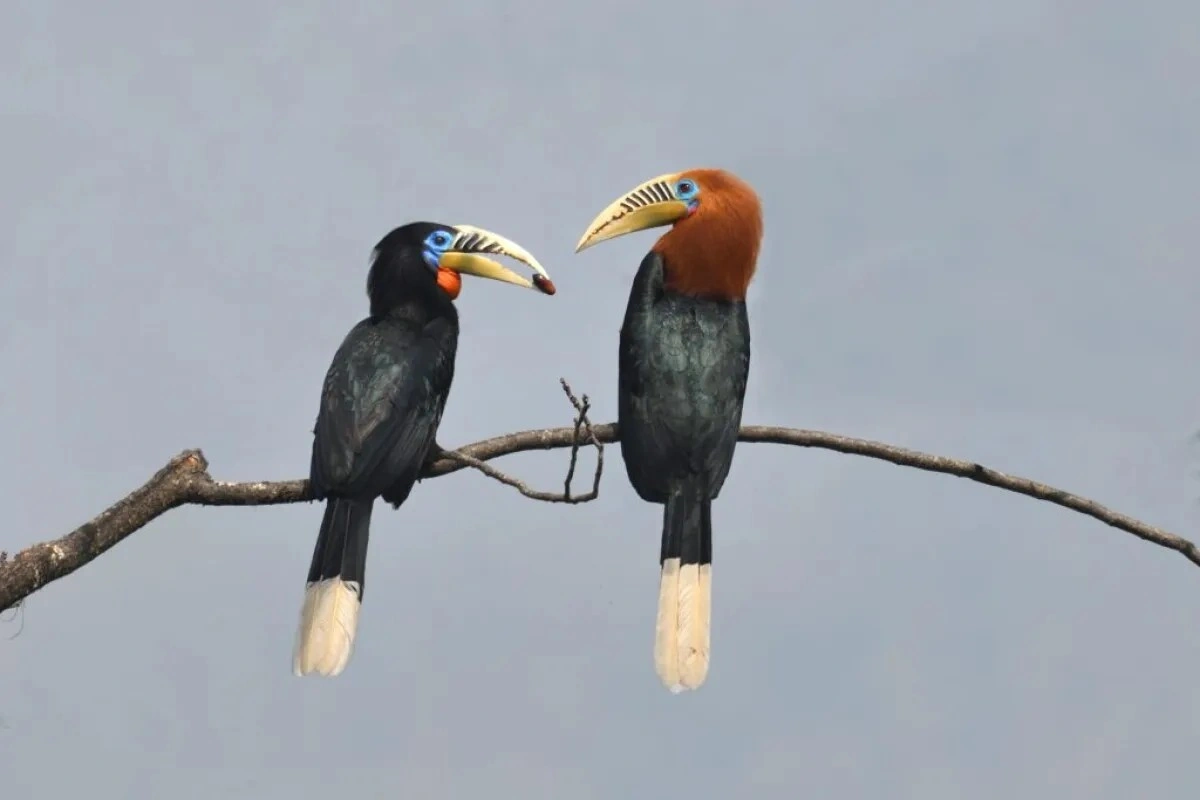Bird Photography Tour in Bhutan - 9 Days
This tour brings the hands-on opportunity of adventure with calmness, offering Bhutan’s finest birding spots such as Yongkola, Thrumshingla National Park, Deothang, and Samdrup Jongkhar. Guided by an experienced birding guide in Bhutan, every moment with nature turns into a chance of not just capturing stunning images but also connecting with the ecosystem and nature.
Highlights
- Black-necked Crane Observation
- Sighting Rare & Endemic Birds
- Find out the inhabitants of Bhutan's nature
- Explore iconic Dzongs, monasteries, and Bhutanese villages
- Enjoy Scenic Landscapes & Peaceful Trails
Trip Overview
This is a 9-day bird photography journey through Bhutan, where nature is perfectly blended with the culture and traditions of Bhutan. Whether a nature lover, a quiet birdwatcher, or even a photographer, Bhutan gives you a chance to experience the awesome wildlife and gives you the opportunity to capture the variety of wildlife present here. Its appealing landscapes and ancient culture will attract you very much towards it. This trip takes you to many places, including Yongkola, Lingmethang, Deothang, Thrumshingla National Park, and Samdrup Jongkhar, with cultural stops in Paro and Khaling to enrich the journey. This trip is an opportunity to explore nature while gaining more knowledge about Bhutan.
Explore a birder’s paradise in the Himalayas
Bhutan is considered a home to more than 700 species of birds, including Himalayan gems and tropical treasures found nowhere else but in Bhutan. The rare sight of endangered birds such as Ward’s Trogon and the striking Rufous-necked Hornbill can be seen in Bhutan. Every region of Bhutan reveals different, unseen things which make this trip more interesting. One of the most wholesome moments of visiting Bhutan is witnessing the graceful black-necked crane. This bird is best viewed in the spring and autumn seasons, which not only makes the photography beautiful but is also one of the rare moments one must experience in their lifetime.
Tracing Heritage: Your Ultimate Cultural Escape
Visiting places is not just about the vibe, but it's more about the purpose. Every destination, whether trekking through Thrumshingla National Park, discovering biodiversity hotspots in Yongkola, or gliding through the peaceful lowlands of Deothang and Samdrup Jongkhar, reveals hidden cultural treasures that weave together the history, a story meant to be told, and the unity of the Bhutanese people, which makes people deeply delve into its culture.
Highlights of the Tour
This Bird Photography Tour provides a great oppourtunity to dive deep into the nature of Bhutan . You will get to explore beautiful and endemic bird species along the routes of jungles of Bhutan.
Black-necked Crane Observation
The Black-Necked Crane is one of the rarest birds, which is loved by all, not just for its rarity, but for the grace it brings to the winter. Every year, birds migrate from the Tibetan Plateau to the Phobjikha Valley. The Phobjikha Valley provides the best view of them between the mountains and a pretty landscape. Seeing them in their natural habitat is a pleasant and very rare moment once witnessed in a lifetime.
Sighting Rare & Endemic Birds
This is a call for all bird lovers. Bhutan gives an incredible chance to see some of the world's most beautiful and endangered birds. With guidance, you'll get the chance to visit different habitats and get a glimpse of stunning species like Rufous-necked Hornbill, Satyr Tragopan, and Ward's Tragopan. Every bird holds a speciality in itself, making you more connected to Bhutan and nature.
Find out the inhabitants of Bhutan's nature
Aside from birds, Bhutan is full of other natural life that thrives in the pure environment present there. Each road you travel, you can view or notice butterflies fluttering on trails along the forest, or some surprising birds flying from one tree to another. Every path you walk will bring you closer to the country's wildlife.
Explore iconic Dzongs, monasteries, and Bhutanese villages
Nature is the main aspect of this journey, but the culture of Bhutan is just as beautiful as nature. The journey includes visiting old Dzongs and temples that have Buddhist mantras making sound on every wall, every moment you pass around them. We will walk through Bhutanese villages with their wooden houses, hand-loomed fabrics, warm smiles, greetings, and welcoming environment. Each cultural tour gives you a hands-on experience beyond the wildlife and photography; it provides you with knowledge and education about Bhutanese life and spirituality.
Enjoy Scenic Landscapes & Peaceful Trails
Bhutan's landscapes are awesome, it's their peacefulness and the beauty of nature. Quiet mountains, river valleys, and elegant forests will welcome you at every turn of Bhutan's high valleys. Watching the sunrise over terraced hills or taking a quiet walk in the forest can bring calm and happiness that many people miss in their busy lives. These simple moments in nature can be just as rewarding as seeing wildlife or feeling clear and inspired.
Conclusion
Joining us on this journey gives you an exclusive chance to connect your camera lenses and eyes with the awesome natural beauty of the country. You’ll be taking home a lot of memories, talks, and photos of the bird along with you. This trip provides you not only with an experience but also gives you enough knowledge about birds, cultures, and people of Bhutan. This 9-day tour is perfect for photographers, birdwatchers, and nature lovers. Let your passion for bird photography emerge in the beauty of Bhutan
This is a 9-day bird photography journey through Bhutan, where nature is perfectly blended with the culture and traditions of Bhutan. Whether a nature lover, a quiet birdwatcher, or even a photographer, Bhutan gives you a chance to experience the awesome wildlife and gives you the opportunity to capture the variety of wildlife present here. Its appealing landscapes and ancient culture will attract you very much towards it. This trip takes you to many places, including Yongkola, Lingmethang, Deothang, Thrumshingla National Park, and Samdrup Jongkhar, with cultural stops in Paro and Khaling to enrich the journey. This trip is an opportunity to explore nature while gaining more knowledge about Bhutan.
Explore a birder’s paradise in the Himalayas
Bhutan is considered a home to more than 700 species of birds, including Himalayan gems and tropical treasures found nowhere else but in Bhutan. The rare sight of endangered birds such as Ward’s Trogon and the striking Rufous-necked Hornbill can be seen in Bhutan. Every region of Bhutan reveals different, unseen things which make this trip more interesting. One of the most wholesome moments of visiting Bhutan is witnessing the graceful black-necked crane. This bird is best viewed in the spring and autumn seasons, which not only makes the photography beautiful but is also one of the rare moments one must experience in their lifetime.
Tracing Heritage: Your Ultimate Cultural Escape
Visiting places is not just about the vibe, but it's more about the purpose. Every destination, whether trekking through Thrumshingla National Park, discovering biodiversity hotspots in Yongkola, or gliding through the peaceful lowlands of Deothang and Samdrup Jongkhar, reveals hidden cultural treasures that weave together the history, a story meant to be told, and the unity of the Bhutanese people, which makes people deeply delve into its culture.
Highlights of the Tour
This Bird Photography Tour provides a great oppourtunity to dive deep into the nature of Bhutan . You will get to explore beautiful and endemic bird species along the routes of jungles of Bhutan.
Black-necked Crane Observation
The Black-Necked Crane is one of the rarest birds, which is loved by all, not just for its rarity, but for the grace it brings to the winter. Every year, birds migrate from the Tibetan Plateau to the Phobjikha Valley. The Phobjikha Valley provides the best view of them between the mountains and a pretty landscape. Seeing them in their natural habitat is a pleasant and very rare moment once witnessed in a lifetime.
Sighting Rare & Endemic Birds
This is a call for all bird lovers. Bhutan gives an incredible chance to see some of the world's most beautiful and endangered birds. With guidance, you'll get the chance to visit different habitats and get a glimpse of stunning species like Rufous-necked Hornbill, Satyr Tragopan, and Ward's Tragopan. Every bird holds a speciality in itself, making you more connected to Bhutan and nature.
Find out the inhabitants of Bhutan's nature
Aside from birds, Bhutan is full of other natural life that thrives in the pure environment present there. Each road you travel, you can view or notice butterflies fluttering on trails along the forest, or some surprising birds flying from one tree to another. Every path you walk will bring you closer to the country's wildlife.
Explore iconic Dzongs, monasteries, and Bhutanese villages
Nature is the main aspect of this journey, but the culture of Bhutan is just as beautiful as nature. The journey includes visiting old Dzongs and temples that have Buddhist mantras making sound on every wall, every moment you pass around them. We will walk through Bhutanese villages with their wooden houses, hand-loomed fabrics, warm smiles, greetings, and welcoming environment. Each cultural tour gives you a hands-on experience beyond the wildlife and photography; it provides you with knowledge and education about Bhutanese life and spirituality.
Enjoy Scenic Landscapes & Peaceful Trails
Bhutan's landscapes are awesome, it's their peacefulness and the beauty of nature. Quiet mountains, river valleys, and elegant forests will welcome you at every turn of Bhutan's high valleys. Watching the sunrise over terraced hills or taking a quiet walk in the forest can bring calm and happiness that many people miss in their busy lives. These simple moments in nature can be just as rewarding as seeing wildlife or feeling clear and inspired.
Conclusion
Joining us on this journey gives you an exclusive chance to connect your camera lenses and eyes with the awesome natural beauty of the country. You’ll be taking home a lot of memories, talks, and photos of the bird along with you. This trip provides you not only with an experience but also gives you enough knowledge about birds, cultures, and people of Bhutan. This 9-day tour is perfect for photographers, birdwatchers, and nature lovers. Let your passion for bird photography emerge in the beauty of Bhutan
Short Itinerary
Arrive in Paro, visit Rinpung Dzong and National Museum for birdwatching
Fly to Bumthang, drive to Thrumshingla National Park and explore bird habitats
Travel to Lingmethan, birdwatching in subtropical forests with rare species
Visit Yongkola, explore top birding trails and riverside landscapes
Drive to Khaling, spot birds in forest corridors and visit Handloom Centre
Travel to Deothang, visit botanical trail, birdwatch and explore local life
Drive to Samdrup Jongkhar, visit monasteries and attend local cultural show
Return flight to Paro, visit Kyichu Lhakhang and traditional farmhouse experience
Depart from Paro International Airport
Bird Photography Tour in Bhutan Itinerary
You’ll arrive at Paro International Airport. After arriving, you'll meet your guide and be welcomed with full enthusiasm and gestures. Then, you'll be taken to the hotel where you are staying. After resting for a while, you can proceed towards Paro Rinpung Dzong. Rinpung Dzong is a majestic Fortress with stunning architecture and has many birds around its surroundings. The nearby riverside trail is home to a diverse array of birds. You can spot stunning species such as River Lapwings, Plumbeous Redstart, and White-capped Water Redstarts. The Dzong is surrounded by mountains and forests, so you’ll get to see epic views from there. If you still have time before dinner, you can go to the National Museum, where the Himalayan Magpies and Black Bulbuls are seen. You can go back to your hotel after exploring and have a warm dinner, and take a rest for the next day.
From Paro in the early morning, you’ll leave for Bumthang by air. After landing in Bumthang, you can begin your journey towards the Thrumshingla National Park. It is at a high altitude and is a hotspot for ecological biodiversity. As you go to the park, you can see many birds such as Blood Pheasant, Great Parrotbill, and Fire-tailed Myzornis. You can take a stop in between to take photographs and to enjoy the scenic landscape of Bhutan. The cold weather and climate, along with the rhododendron surrounding the landscape, provide you with an ethereal view. You will probably reach Thrumshingla by late afternoon. You’ll be tired of this long journey, so you can check into the hotel and take a rest. Later, in the evening, you will be welcomed by a great and warm plate of dinner. You can end your day by talking with your fellow travellers.
Start your day early today. You will move towards a warmer region from Thrumshingla to Lingmethan. You will reach Lingmethan in the early afternoon. After checking into your hotel, you can leave the hotel to explore Lingmethan. Here, in this region, there are denser and deeper forests that will give you a greater variety of birds to view. The Lingmethan lies in the sub-tropical region of Bhutan, which is home to many rare species such as Satyr Tragopan and White-browed Bush Robin in higher zones, to Golden-throated Barbets and Sultan. Lingmethan is one of the places where bird activity is very active and at a high level. You can stop at many places to take photographs of not only birds here, but also the wide range of plants and trees present here. The region is known for endemics and rarely-seen species like the Slender-billed Scimitar Babbler. After your exploration is over, you can return to your hotel and rest for the next adventure.
From Lingmethang Yongkhola is a very short distance. You can wake up early in the morning and visit Yonkhola. Yongkhola is one of the best birding spots in Asia. This region also lies in the subtropical heart of Bhutan. This place is home to many different species of birds, such as Ward’s Trogon, Beautiful Nuthatch, Rufous-necked Hornbill, and Golden-naped Finch. You can spend your whole day exploring each trail of Yonkhola, and you’ll also be surprised to see the beauty of the river's banks present here. Altogether, you’ll get to explore very beautiful natural scenery. You can return to your hotel for lunch. After lunch, you can go to your room, take a rest, and start packing your luggage cause in the early morning we will be leaving for our next destination.
Wake up in the early morning cause you’ll be leaving for your next destination. After breakfast, you’ll be leaving for Khailing. Khailing is also a place full of biodiversity and local heritage. While going towards Khailing, you can stop at many forest corridors where you may see the Grey-chinned Minivet, Hoary-throated Barwing, and Scaly Laughingthrush. After reaching Khaling, you can visit the historical Khaling Handloom Development Centre, where local women are seen weaving traditional Bhutanese fabrics. You can take photographs here too to carry a memory of tradition with you back home. Later, you can explore the farmline edges and forest trails, looking for other birds such as Mountain Scops Owl or catching frog calls and glowing insects. You’ll stay overnight in a cosy lodge in Khailing, and the next day you'll leave for your next destination.
On this day, you will go to Deothang. Here, the temperature and climate change are changing dramatically. From the highland of Khailing, you’ll be travelling towards the sub-tropical region of Deothang. As you move more towards the Deothang, you can also see the change in bird species here. You can stop during the journey to take a look at Long-tailed Sibyls, Black-throated Sunbirds, and Bronzed Drongos. You can take photographs of these rare birds and continue your journey. In Deothang, you can visit the Sherubtse College botanical trail, where the ecological biodiversity is awesome. This region also provides you with awesome butterfly photography. In the afternoon, you can take a short stroll towards the community present there and interact with the local people present there. You can even get knowledge of how the local people here cook and make medicinal herbs. Later, you can set up a stationary birding session with the help of a tripod, where birds like Wreathed Hornbills, Ashy Bulbuls, and Scarlet Minivets can visit you themselves. You will stay overnight in Deothang
You can begin your day by glancing at the Lesser Coucal, the Chestnut-headed Bee-eater, and the Red-wattled Lapwing in the early morning in Deothang. Then you’ll head towards Samdrup Jongkhar. You will get to explore a different side of Bhutan here. It is also a southwestern gateway town near the Indian border. Before visiting the town, you can explore places such as small monasteries and heritages in the hills. These quiet, spiritual places are home to many unique birds and give you a perfect view for peaceful photography of architecture and monks doing meditation. After checking in, you can go to explore and see some birds like Black-hooded Orioles and Cattle Egrets. Later in the evening, a cultural dinner show is hosted by the locals for you here. You can see regional dances and taste their famous food. After dinner, you can share your experience with locals and go to your room to take a rest for your next journey.
In the morning, take a short birding walk towards Samdrup Jongkhar lower green lands. After your breakfast, you will board your domestic flight to
Paro. After you reach Paro and after resting for a while, you will go to visit Paro’s oldest temple, Kyichu Lhakhang. It is peaceful, and you can see many tourists coming here. Here, you can also spot some of the birds such as Bulbuls, Sparrows, and Magpies. From here, you can visit a traditional farmhouse to learn more about the Butanese lifestyle. Here, you can try butter tea and ara. You can try archery too, which is Bhutan’s national sport and perfect if you want a candid photograph of yourself. End your day with a festive farewell dinner with cultural dances and folk songs.
This is your final day in Bhutan. Today you will be leaving for your home country. Wake up early in the morning, you can go to Paro Chhu river if you want, else you can stay at the hotel, pack your things, and have breakfast. You can talk with the local people of Paro and share your experience with them. You can also tell them what you have learnt this far from this trip, and show them the picture you have taken. There’s a market near your hotel, so if you want to take home some souvenirs, you can shop there. After lunch, you can talk with your host, and your guides can exchange contact information with them if you want. Then, finally, your journey will come to an end.
Know Before You Travel
- :
Bird Photography Tour in Bhutan Map
Download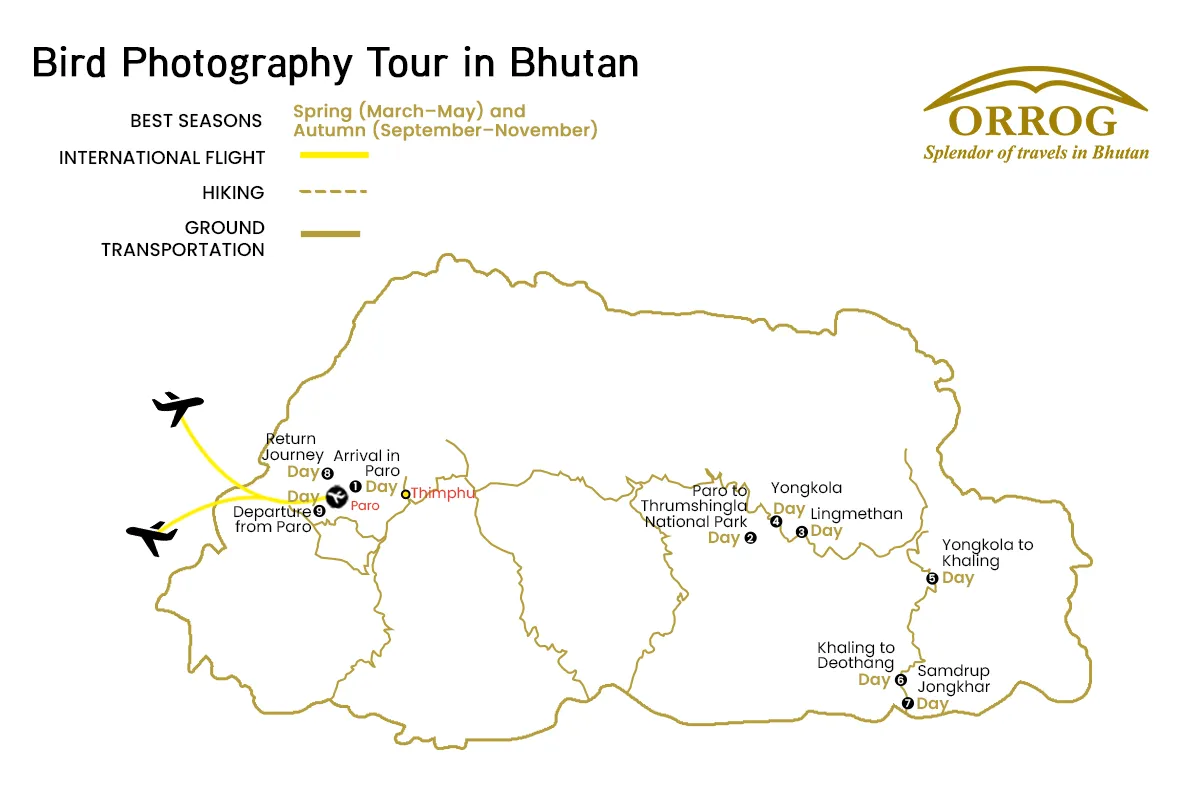
FAQs for Bird Photography Tour in Bhutan
October to April is perfect for watching birds such as the Black-Necked Crane. The month of spring (March-May) offers beautiful landscapes to watch and colourful bird sightings.
Packages usually include accommodation, meals, guide services, park permits, and transportation. As this trip is a photography-focused tour, it also includes guided birding walks and experts.
Tour prices vary based on duration and group size, and also depending on customisation, accommodation, and included services.
Yes! Whether you're a professional photographer or a newbie, this tour welcomes all skill levels. You’ll receive support from experienced birding guides and photography tips along the way.
No special permit is required for photography, but you’ll need a tourist visa and park entry permits, which are arranged by us.
Yes, the medical team will accompany you all the way. Basic first-aid kits are always ready, but in case of prescribed medicine for your condition, that needs to be carried by you.
You need a visa and all necessary permits for your trip. These documents can not be received on the day of your arrival, so they must be processed before coming here. After you book a trip with us, we will manage these papers for you. Your Bhutan visa is arranged by Orrog as part of the package.
The main way to come to Bhutan is through Paro International Airport, which is well-connected to cities like Bangkok, Delhi, Kathmandu, and Singapore. Most people arrive by air, but if you plan to come via road, you can enter through Phuentsholing, located on the southern border with India, which is the most commonly used entry point.
It is recommended to apply for the visa at least 20 days before your planned departure date so that there is enough time for processing your Bhutan visa, finalizing your itinerary, and arranging your guides and transportation. Although visa processing itself is relatively fast once payment is received, early preparation helps avoid delays and ensures availability, especially during peak seasons (spring and autumn).
You don’t require a passport-size photo for the visa, but it is wise to carry at least 2–4 recent passport-sized photographs during your trip. These may be needed for local permits, registration, or when applying for a local SIM card upon arrival in Bhutan.
Yes, you can lengthen your stay in Bhutan either before or after your trip. Bhutan’s tourism model requires visitors to pay a Sustainable Development Fee (SDF) and a daily package cost, so any extra days will involve additional charges. Extensions are a great opportunity to explore cultural sites in Paro, Thimphu, or even add another short trip or day hike.
Yes, Bhutan requires full tour payment in advance before your visa can be processed and issued. The government of Bhutan regulates this policy to ensure that all travel arrangements are confirmed through a licensed Bhutanese tour operator. We are a licensed tour operator that ensures you have everything you need for a trouble-free trip.
Any personal expenses are not covered in the package like:
- Tips for your guide and other staff
- Bottled drinks and snacks(personal expense)
- Souvenirs or local crafts
Credit cards are easily accepted in major cities like Paro and Thimphu. But in remote areas, you may not have access to a card or an ATM. So, it is best to carry some cash before heading for the trip.
Tipping is not mandatory, but it is a widely appreciated gesture and a customary way to show gratitude for good service. The tipping guideline would be to give USD 5-10 per day as a tip for the guides and other staff.
Paro International Airport is the only international airport in Bhutan. It is well connected by flights from cities like Bangkok, Delhi, Kathmandu, and Singapore.
Yes, airport pick-up and drop-off are included in the package. We will have your guide and driver meet you at the airport and transport you to your hotel.
While Bhutan's roads are mostly paved, some parts are narrow, winding, and occasionally affected by weather. However, we ensure your travel is safe, well-maintained, and driven by an experienced professional throughout the journey.
Once you arrive in Paro, we will arrange private ground transportation to the starting point as we pass through lush valleys and traditional villages. So, you don’t have to worry about any transportation services.
Yes, it is very safe to travel even with children in Bhutan. Roads are well-maintained, and the pace of travel is generally relaxed and child-friendly.
We will usually travel in comfortable, private vehicles with experienced drivers. All ground transportation is included in your package.
The Bhutanese Ngultrum is used in Bhutan. All local transactions during the trip will be in BTN.
US Dollars (USD) are generally accepted at larger hotels, souvenir shops, and tour operators, particularly in Paro and Thimphu. However, it’s advisable to convert your currency to BTN for general purchases in rural areas. Other currencies like the Euro or the Pound are not commonly accepted directly.
No, credit or debit cards are not accepted on the trip, as it takes you through remote regions with no banking or electronic payment access. All trip-related payments like accommodation, meals, permits, etc, are paid in advance.
You can exchange foreign currency at the Paro International Airport, at banks, or through licensed money changers in cities like Thimphu and Paro. It's best to exchange enough cash before heading out on the trip.
The national language is Dzongkha, but many Bhutanese also speak English. If you speak English and are worried about communicating with the local people, you will have your guide as a translator.
Yes, all licensed tour guides in Bhutan are required to speak fluent English. Many are also trained in other languages such as German, Japanese, or French. Communication during the trip will be smooth and clear in English.
Most signboards, tourist maps, and information brochures are written in English, especially in tourist destinations like Paro, Thimphu, and trailheads. Directional signs along routes are often labeled in both Dzongkha and English.
No, learning Dzongkha is not at all needed for the trip, but knowing a few basic words like "Kuzu zangpo la" (Hello) or "Kadrinche la" (Thank you) is a good way to interact with the locals.
Language barriers are minimal, as your guide will handle all communication with locals and support staff. Your guide will translate for you during your interaction with the locals.
To greet people, you can greet with locals “Kuzu zangpo la” (Hello) by performing a slight bow. Most common greetings include physical greetings, such as shaking hands less visible, especially in rural areas.
Yes, but remember to seek permission, especially when taking photos of monks, locals, or temples. Please note that clicking photos is not allowed at most religious sites.
Visitors should dress modestly and respectfully. This means:
- Covering shoulders and knees
- Removing hats and sunglasses
- Not wearing shorts or sleeveless tops
This applies to both men and women.
Bhutan typically uses Type C, Type D, and Type G electrical outlets. Standard safe voltage is 230V and frequency is 50Hz; therefore, ensure that your equipment is compatible with this voltage.
Indeed, it is highly advised to take along a universal travel adapter, particularly one to fit a variety of types of plugs, because plugs can be different in a hotel or a guesthouse.
Bhutan follows Bhutan Time (BTT), which is UTC/GMT +6 hours. This time zone remains consistent throughout the year.
No, Bhutan does not observe daylight saving time. The country maintains the same time year-round.
Bhutan is 30 minutes ahead of India. For example, 12:00 PM in India is 12:30 PM in Bhutan.
Yes, souvenirs can be bought in Paro or Thimphu before or after the trip.
Some popular souvenirs include hand-woven textiles (kira and gho fabric), prayer flags, thangka (religious scroll) paintings, handmade paper products, traditional masks, and Buddhist artifacts.
You can do some gentle bargaining in local street markets. However, in government-run shops and fixed-price stores, prices are usually non-negotiable.
Yes, you can easily purchase a SIM card upon arrival in Bhutan. We will assist you with the process, and you'll need a passport copy and a passport-sized photo.
No, internet access is not available during the trip. However, Wi-Fi is available in hotels in Paro and Thimphu before and after the trip.
Since the weather can be unpredictable and temperatures can vary drastically, layered clothing is essential. You should pack:
- Base layers (thermal tops and bottoms)
- Insulating layers like fleece or down jackets
- Waterproof and windproof outer layers
- Warm hats, gloves, and neck gaiters for freezing conditions
- Moisture-wicking socks and weatherproof trekking boots
Nighttime temperatures can be extremely cold, especially at high-altitude places. So you need to have enough clothing to keep you warm.
The weather is clear with mild daytime temperatures during spring and autumn.
Reviews & Ratings
-
Guarantee -
Thimphu,Bhutan -
975+17160228
Ready to Explore Bhutan?
Start your journey today and discover the magic of Bhutan with our expert guides and carefully crafted tours.
Book This Trip
-
No booking or credit card fees -
Best price guarantee -
Full customize trip
Ask a Question
Feel free to ask us anything about this tour. A travel expert will then get back to you as soon as possible
Ready to Explore Bhutan?
Start your journey today and discover the magic of Bhutan with our expert guides and carefully crafted tours.
